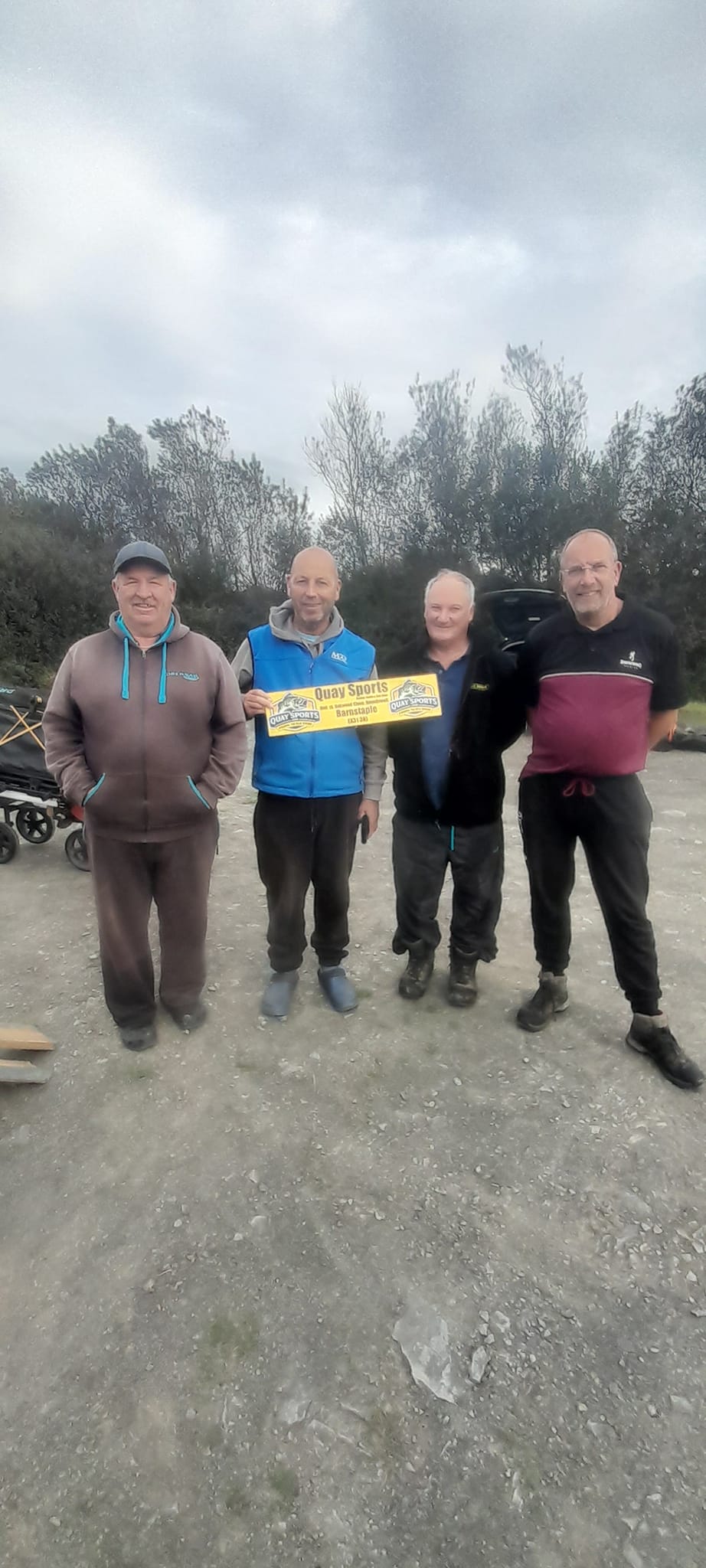
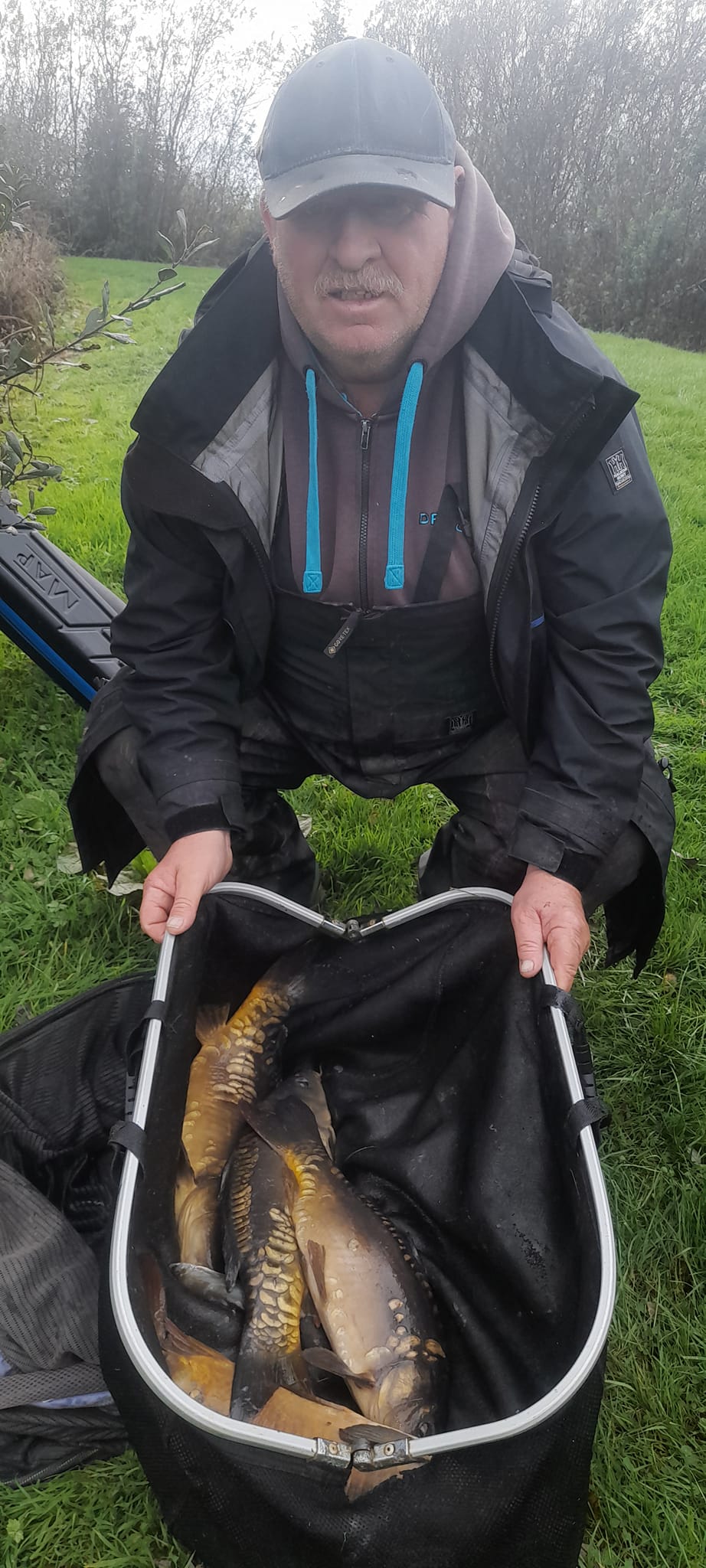
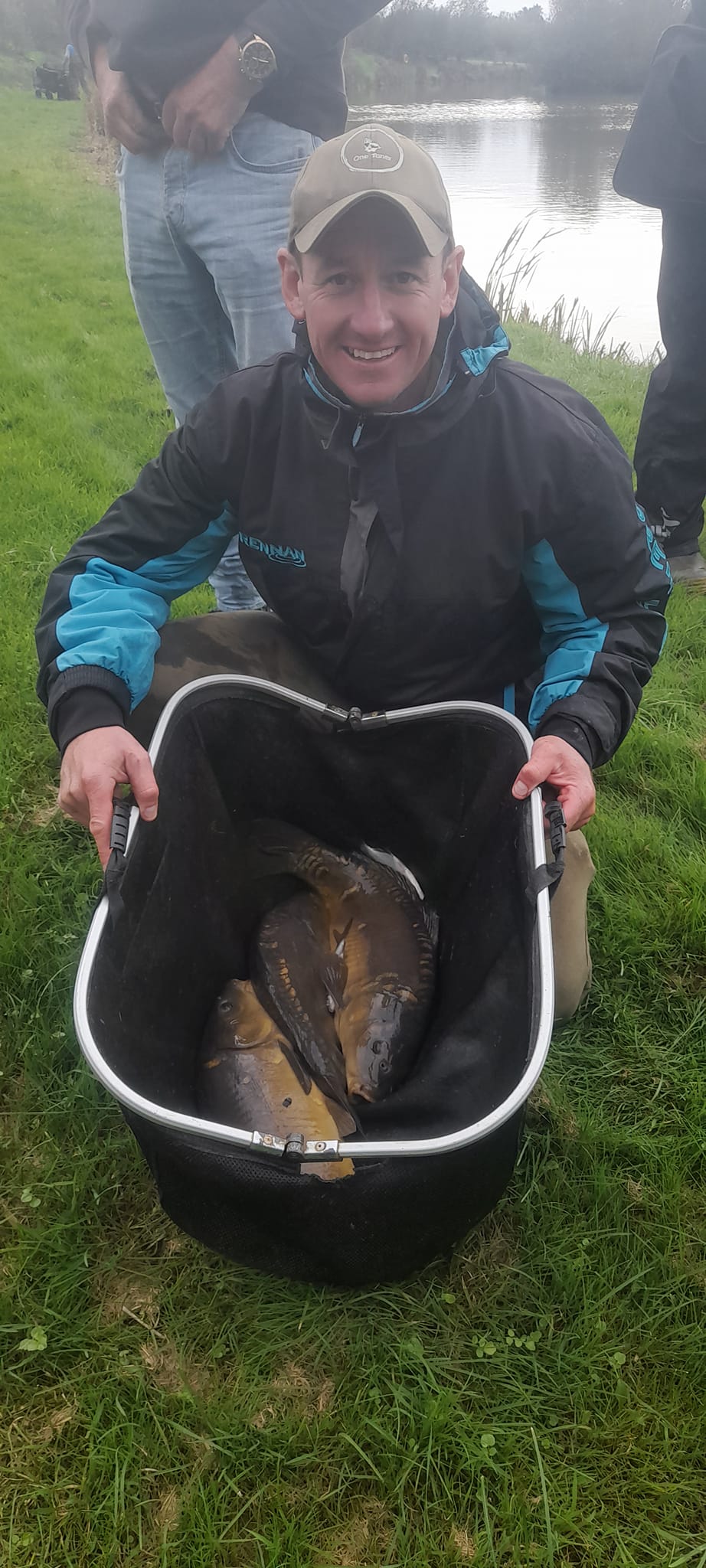
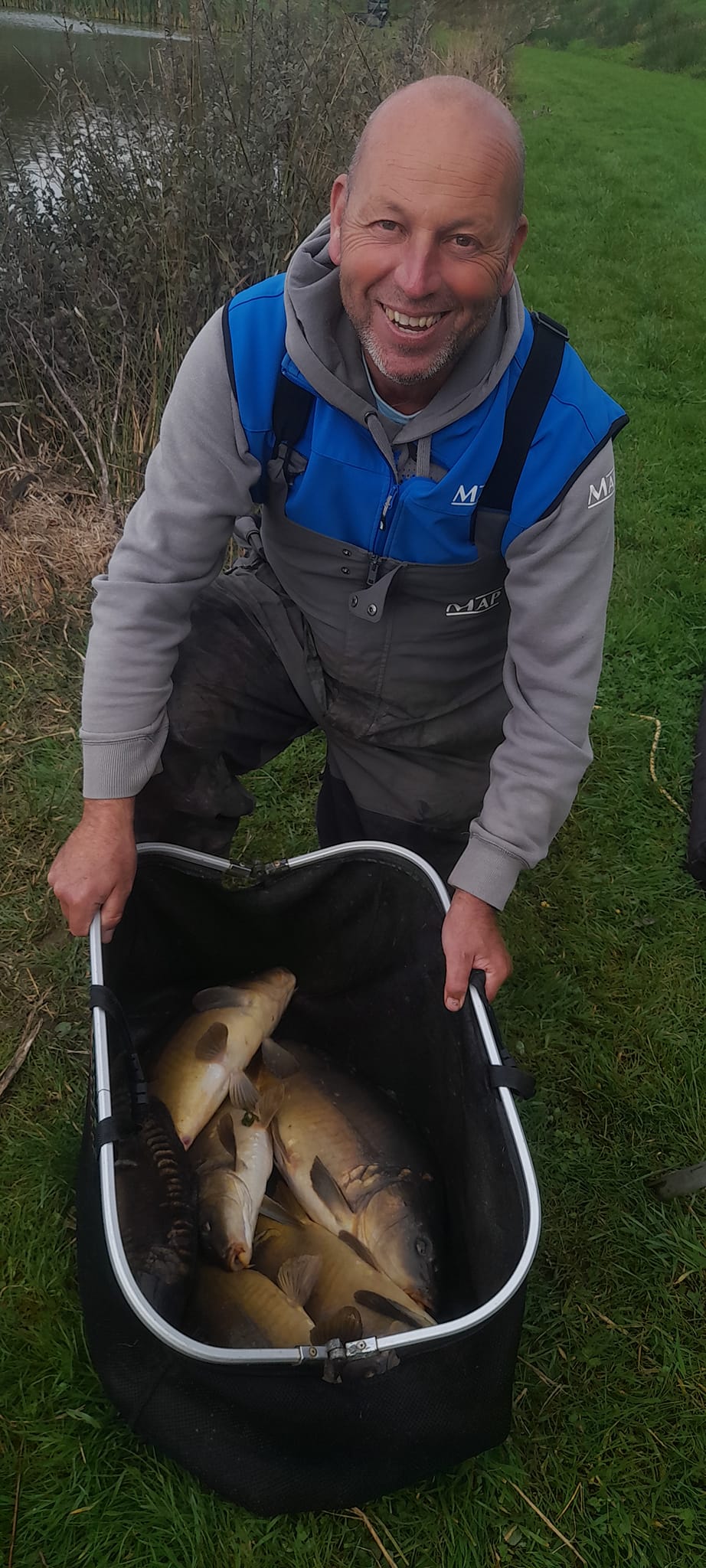
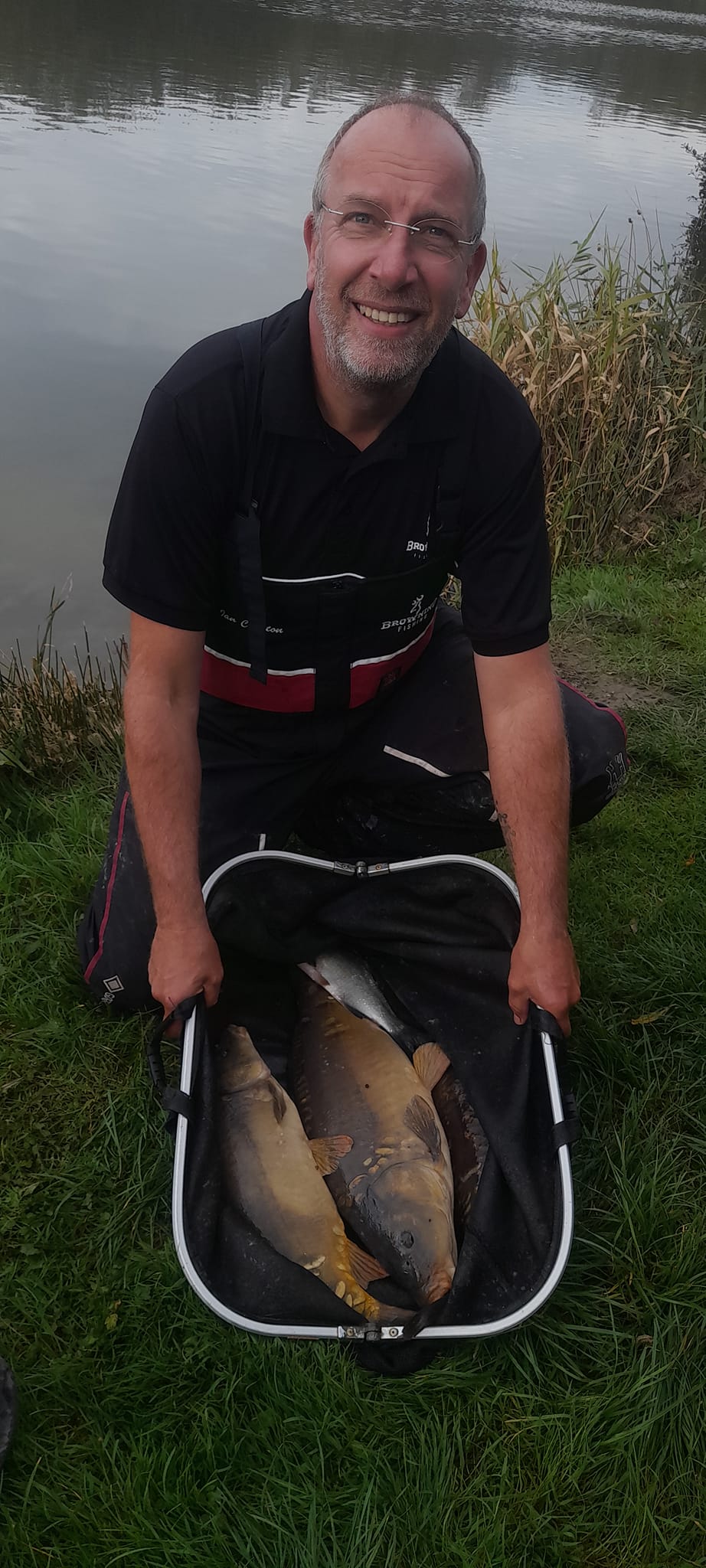





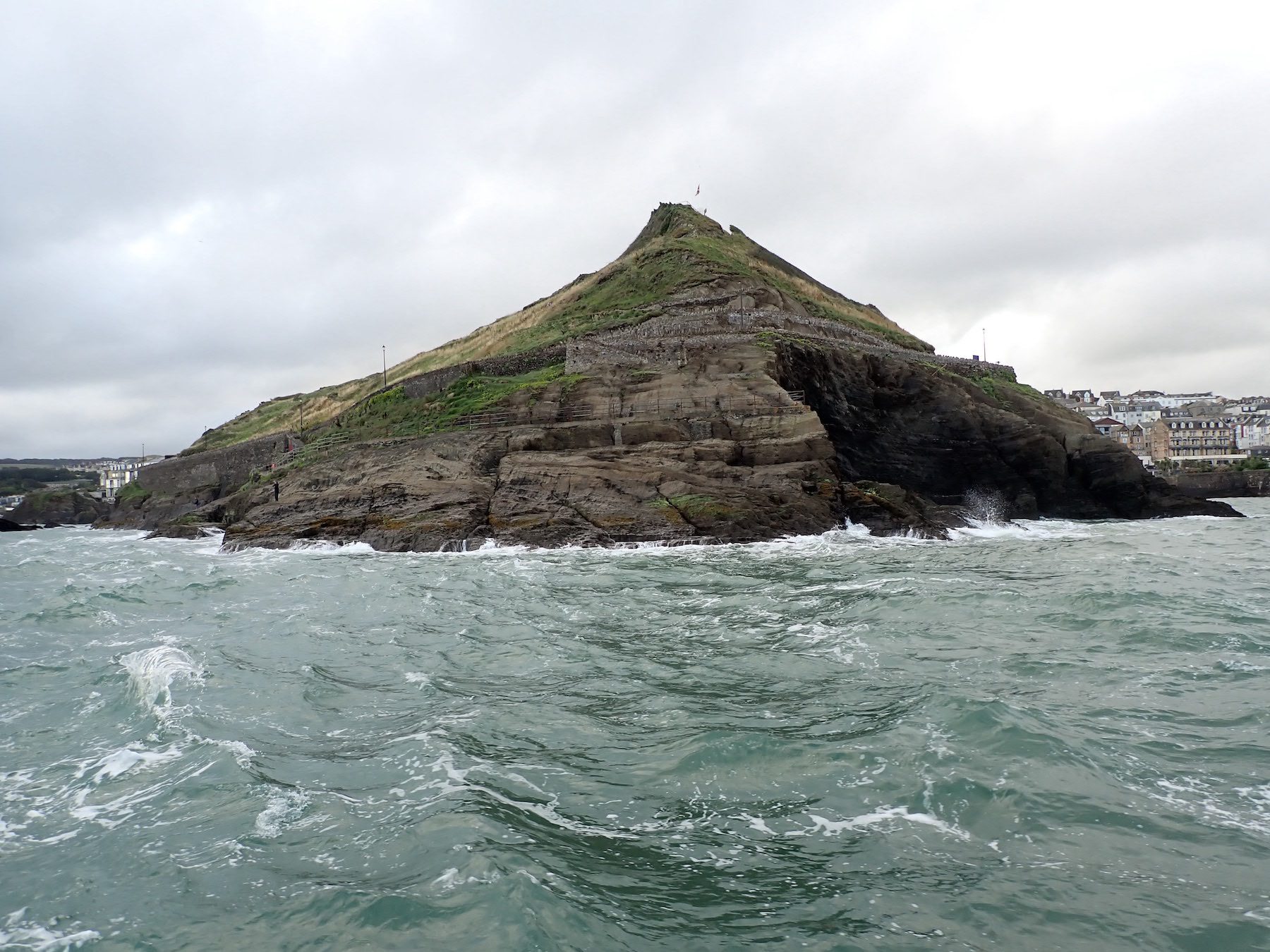
Following on from my previous post Jamie has asked if I could share the below on my website.
https://www.justgiving.com/crowdfunding/lyndse-and-jamie-steward-rnli-ilfracombe?utm_term=mPZrnaDY8 please could you share this on your page and help me raise money for the RNLI ilfracombe as they saved my life on Saturday night the least I can do is raise them some money. I will be walking 100k with my wife in the lakedistrict to help them like they helped me. 🙏 also I want to try and raise awareness on an anglers safety and try and get as many anglers as I can to buy a crew saver life jacket or floatation device. These should become an essential part of our kit. Regards Jamie
Since publishing my initial article on this near miss I have received considerable feedback and believe that the local RNLI will be launching an awareness campaign on safety. I will liaise with them to help promore awareness of the dangers and how to increase survival rates if things go wrong.
Local tackle shops are joining in the general effort to raise awareness.
Quay Sports posted the below guidance

Simon McCarthy at Summerlands works on the lifeboat and has been involved in many local rescues and is keen to offer advice to any anglers who vist the shop at Westward Ho!
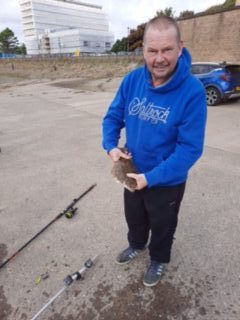
Nick Braunton sent a short report on the flounder season starting in the Taw Estaury. He enjoyed a recent session catching and returning severl nice flounder to 1lb 6oz. I asked him if crabs were stripping the baits and he informed me that he had no problem with crabs stripping the bait but large numbers of small bass were whittling the baits away. This is perhaps an encouraging sign for the future.
Flounder sport should take off when heavy rain flushes out the estuary and a few sharp frosts deter the crabs.
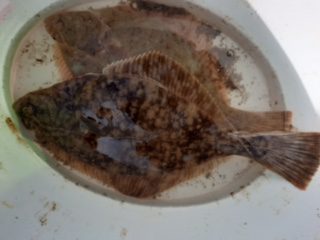
 Mid October is a great time to venture out of Minehead with a wide range of opportunities on offer. I had booked onto Teddie Boy Charters with my son James Thomas, Rob Scoines and a friend from my working life Derek Walters. There were three other anglers already booked onto the boat two of whom turned out to be ex Combe Martin SAC members who I had last met up with twenty years or so ago.
Mid October is a great time to venture out of Minehead with a wide range of opportunities on offer. I had booked onto Teddie Boy Charters with my son James Thomas, Rob Scoines and a friend from my working life Derek Walters. There were three other anglers already booked onto the boat two of whom turned out to be ex Combe Martin SAC members who I had last met up with twenty years or so ago.
Mike Webber is one of the UK’s youngest charter skippers but has accumulated a mass of knowledge beyond his years after crewing with his father Steve of Osprey Charters for many seasons.
The plan was to enjoy some of the mixed general fishing on offer close to Minehead. Ray, huss, conger, smoothound and bass were all on the agenda.
Sailing from Minehead is always very tide dependant and today’s departure was at 11:00am allowing us time to grab a Full English at the local spoons before grabbing bait from Mike’s Speedbait outlet.
We gathered on the Quay just before 11:00am and chatted about the day ahead noting the autumn shades of the trees on the hillside overlooking the harbour. It was good to exchange a few words with Mike’s father Steve who has taken myself and other CMSAC members out to sea on many occasions.
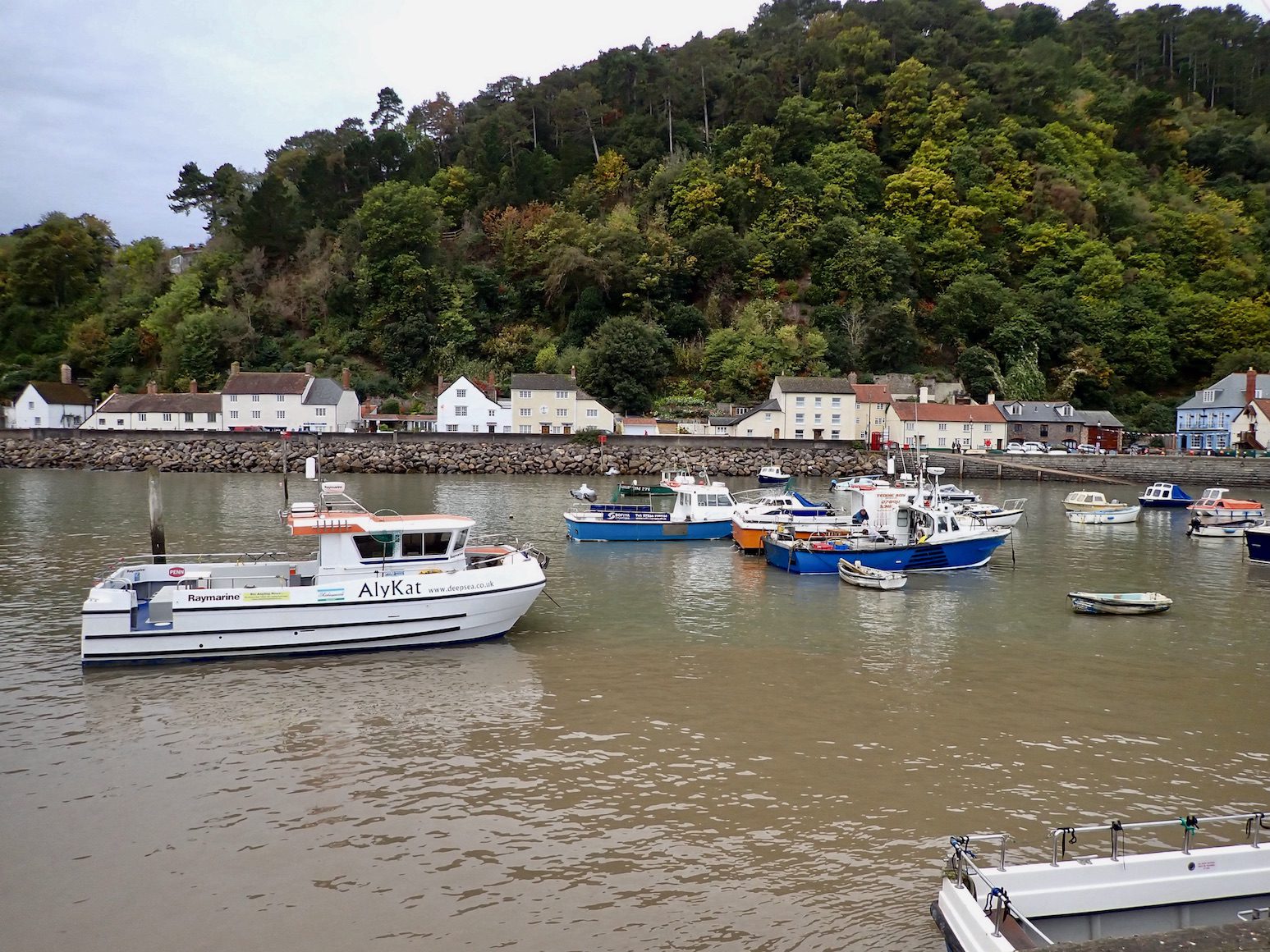
The boat turned West out of the harbour and steamed down channel to a mark off Porlock Weir where Mike predicted huss, conger and the chance of a ray. The first mark proved a little snaggy and we lost a couple of rigs and hauled up numerous small conger.
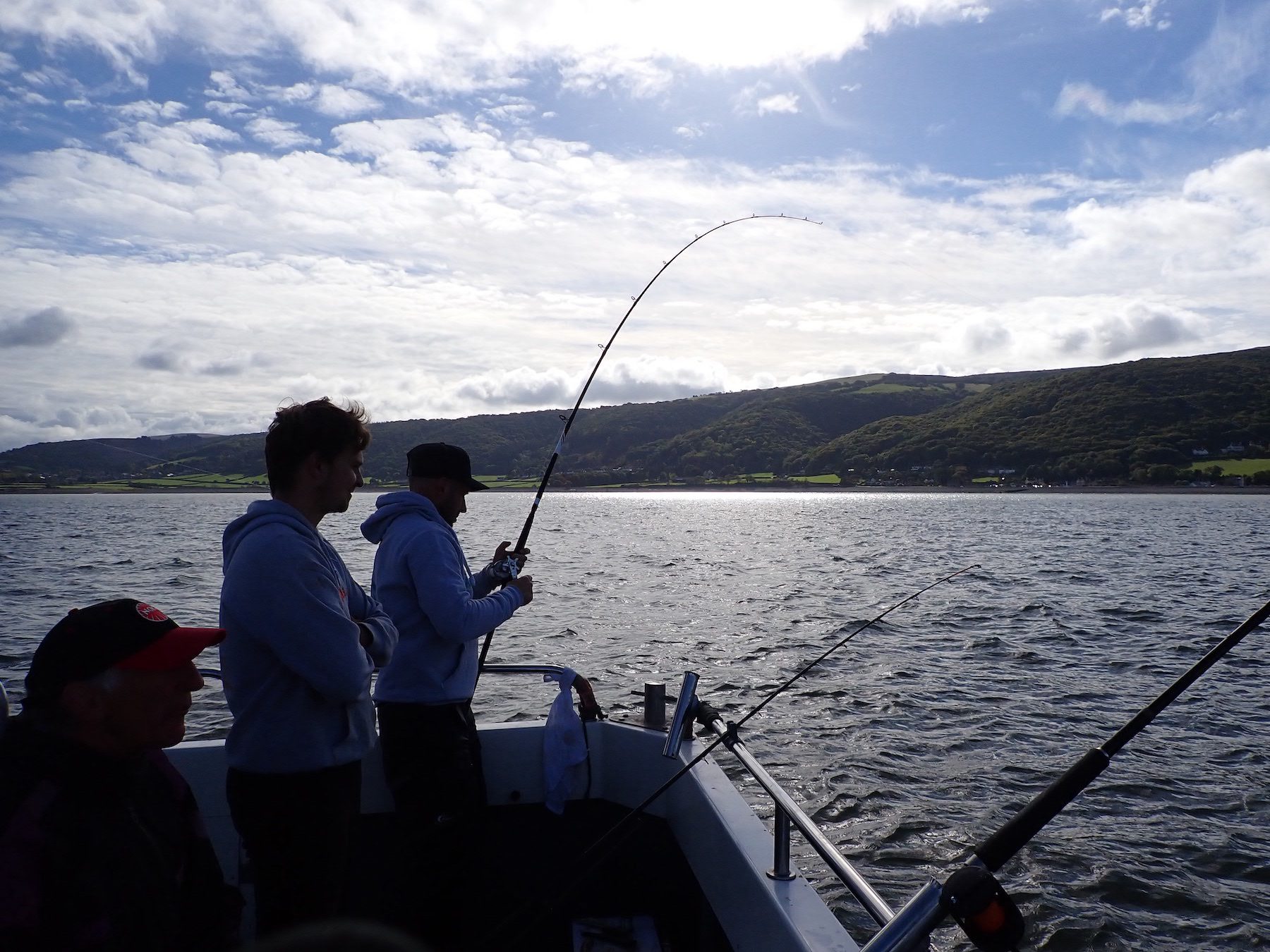
Mike up anchored and moved the boat a few hundred yards before resetting the anchor. This proved to be cleared ground and we lost no more rigs. The conger were undoubtedly present in good numbers and a succession of hard fighting eels were brought to the boat. Derek hooked into an eel that put a substantial bend into his rod before eventually being brought to the boat. The eel estimated at around 15lb was hauled in for a quick photo. Next drop down Derek was into an even bigger eel that was released boat side.
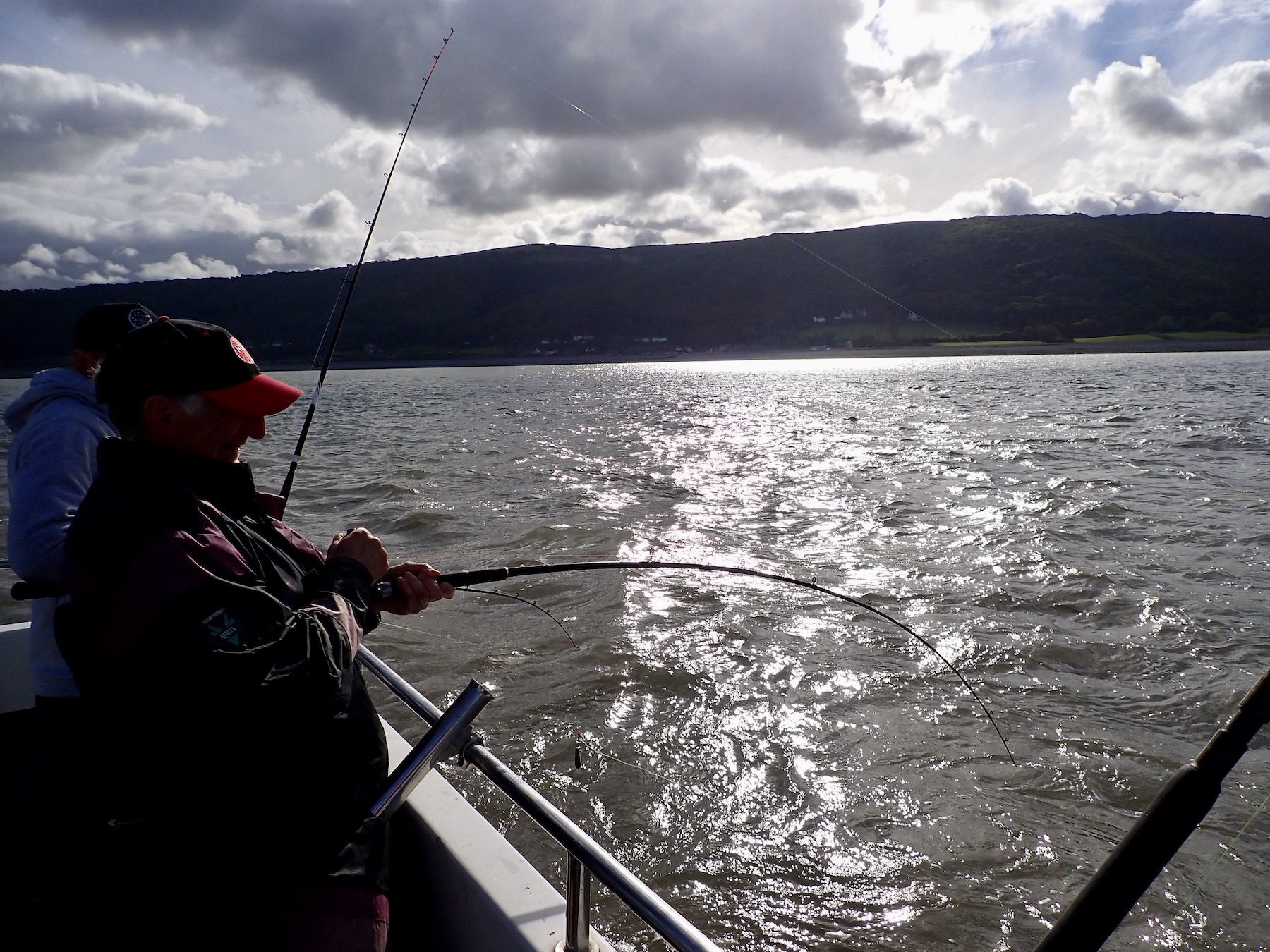
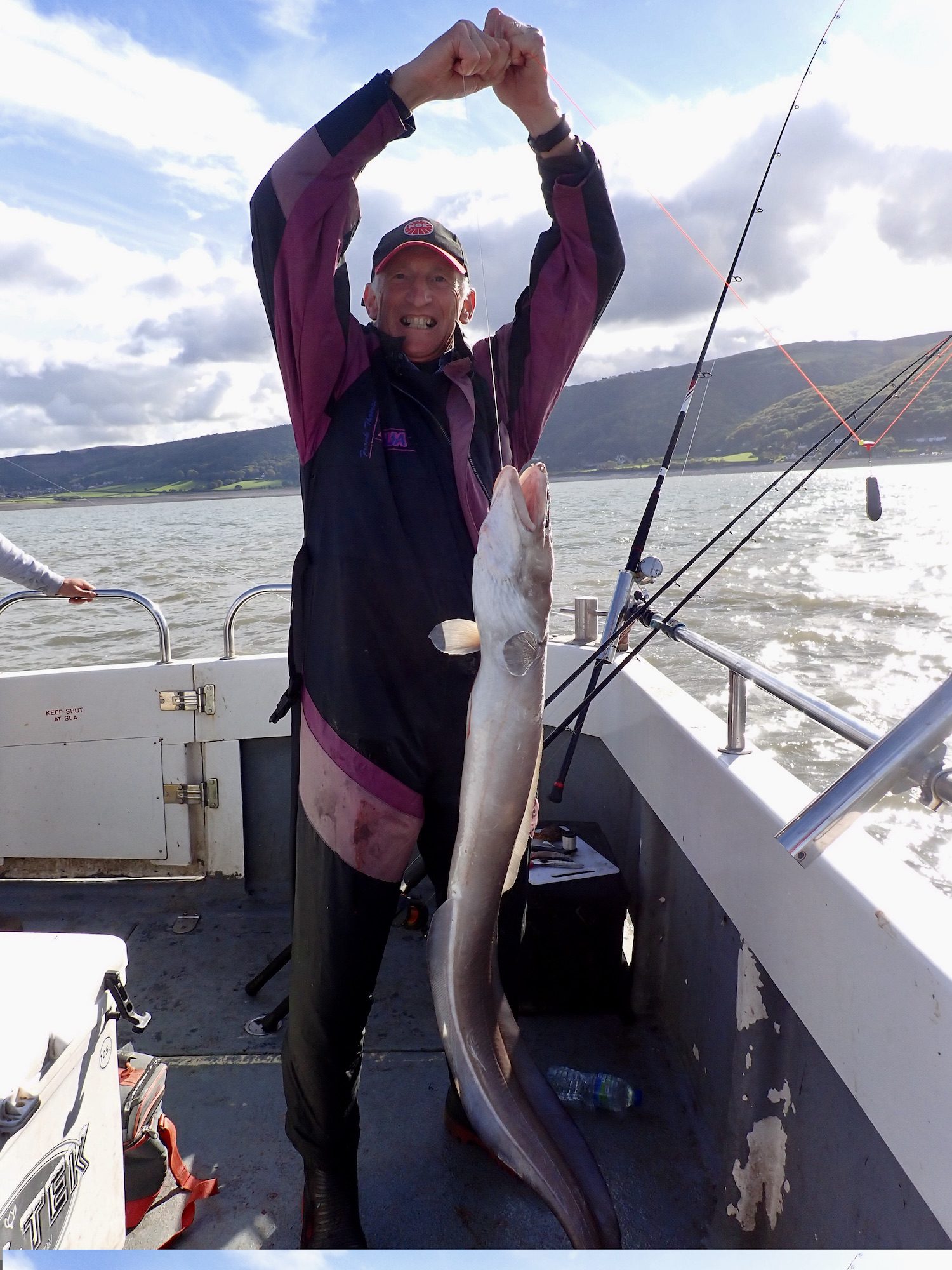
A couple of decent huss were brought into the boat along with a thornback and a blonde ray. As the tide eased the action slowed and Mike said it was time to head up channel for a blonde ray.
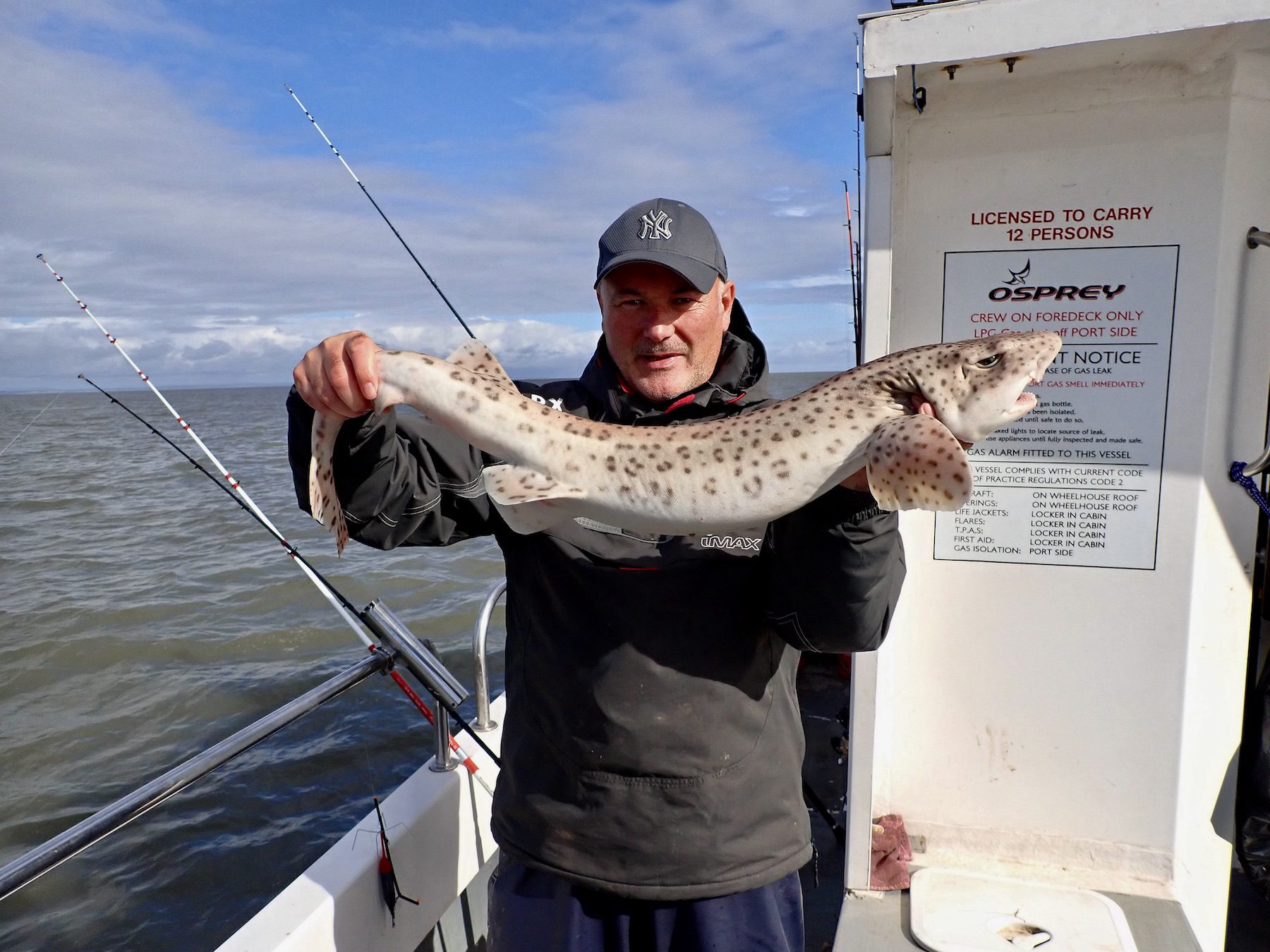
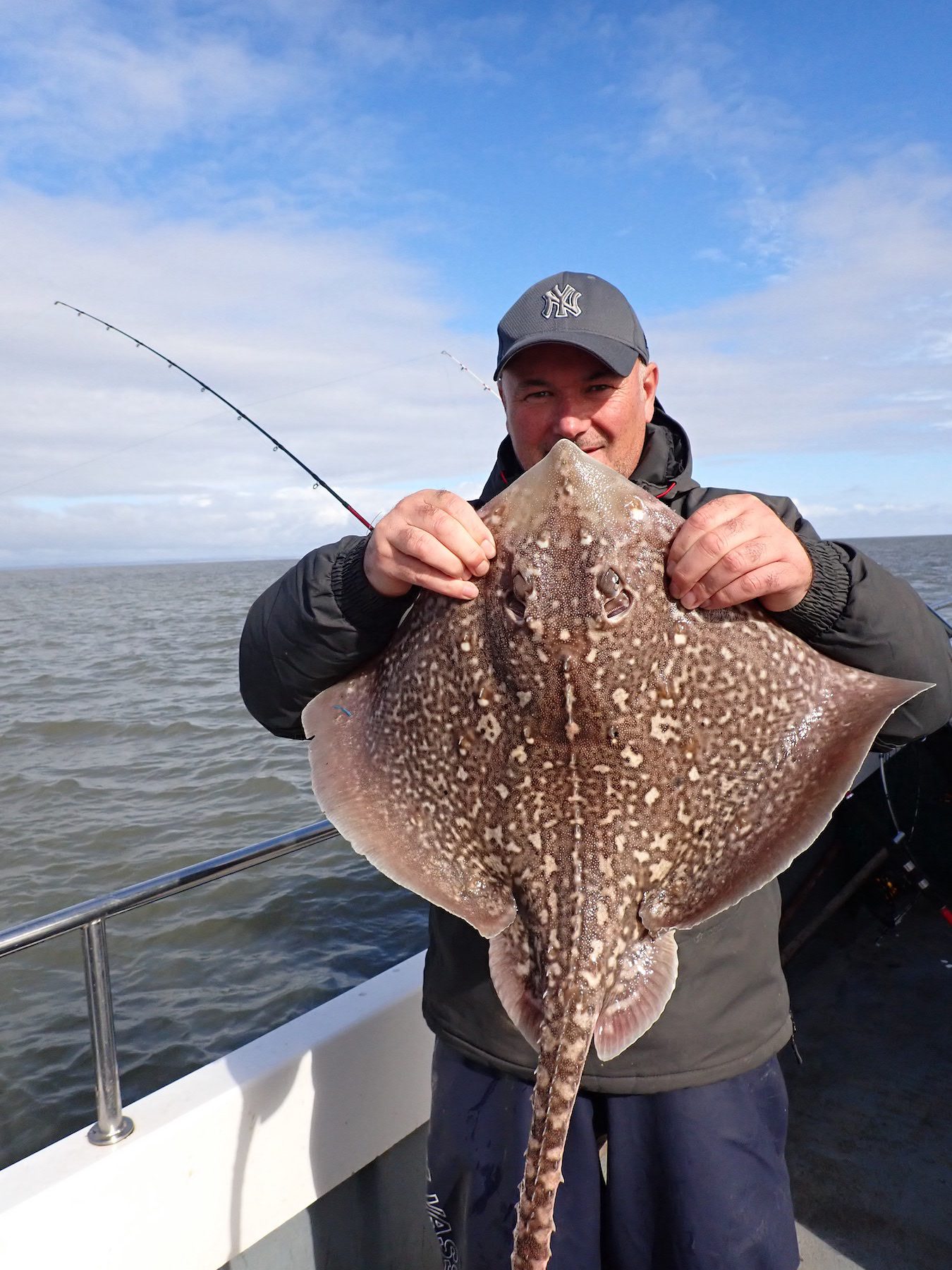
This new mark was clean ground so Mike stated that conger should be less plentiful. Wrong! A succession of small eels seized our baits intended for blonde ray. Mike was however proved correct as the tide eased to low water. Rob Scoines hooked a decent fish that proved to be a lovely looking blonde of around 8lb.
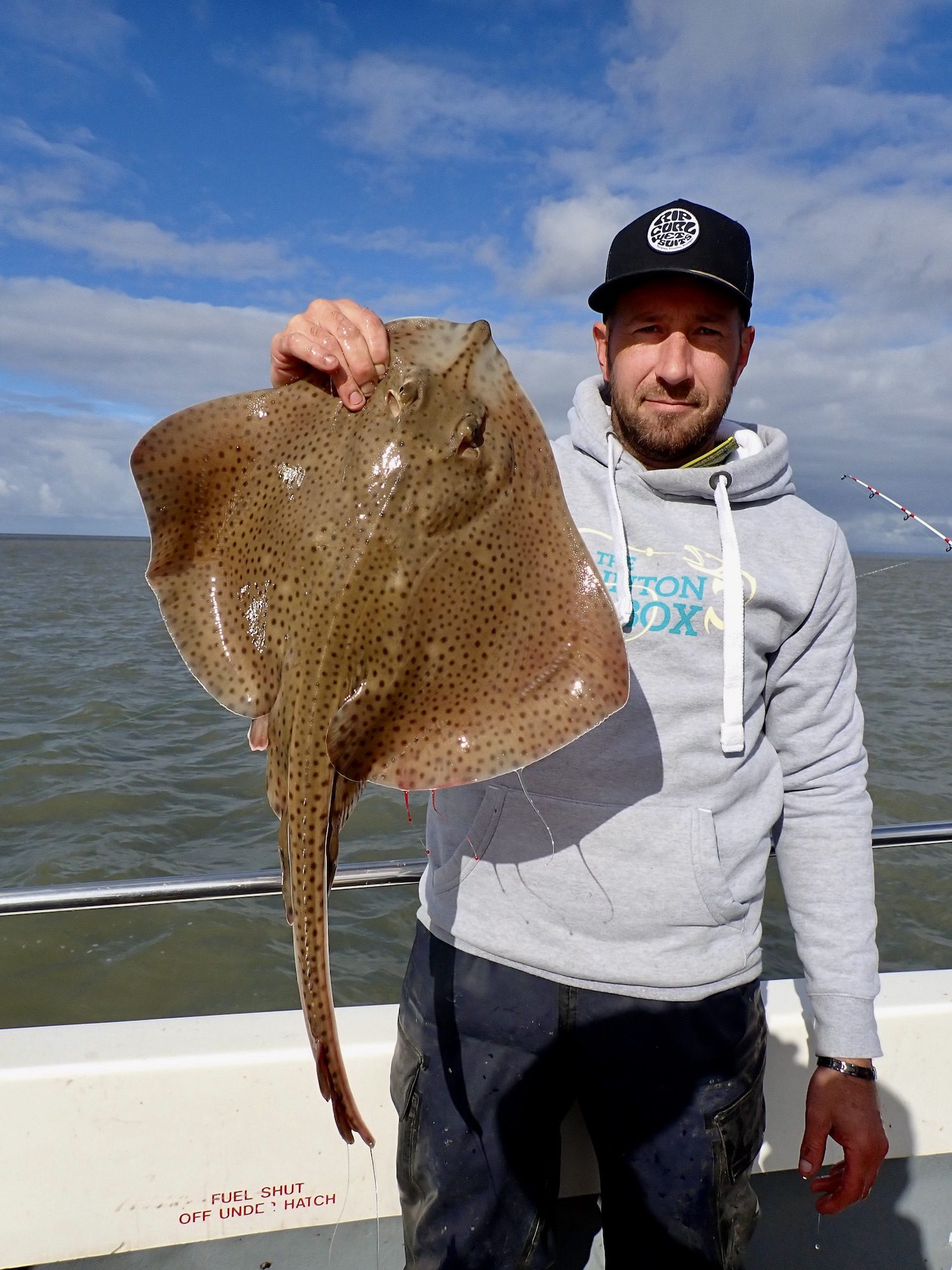
This was followed a few minutes later when I hooked a good fish that put a healthy bend in my rod before eventually being pulled over the rim of the net. I estimated the ray at around 12lb and slipped it quickly back after a photo. A few years ago, I would have been keen to put a number to the fish but these days I seem to have lost that urgent need for gathering statistics.
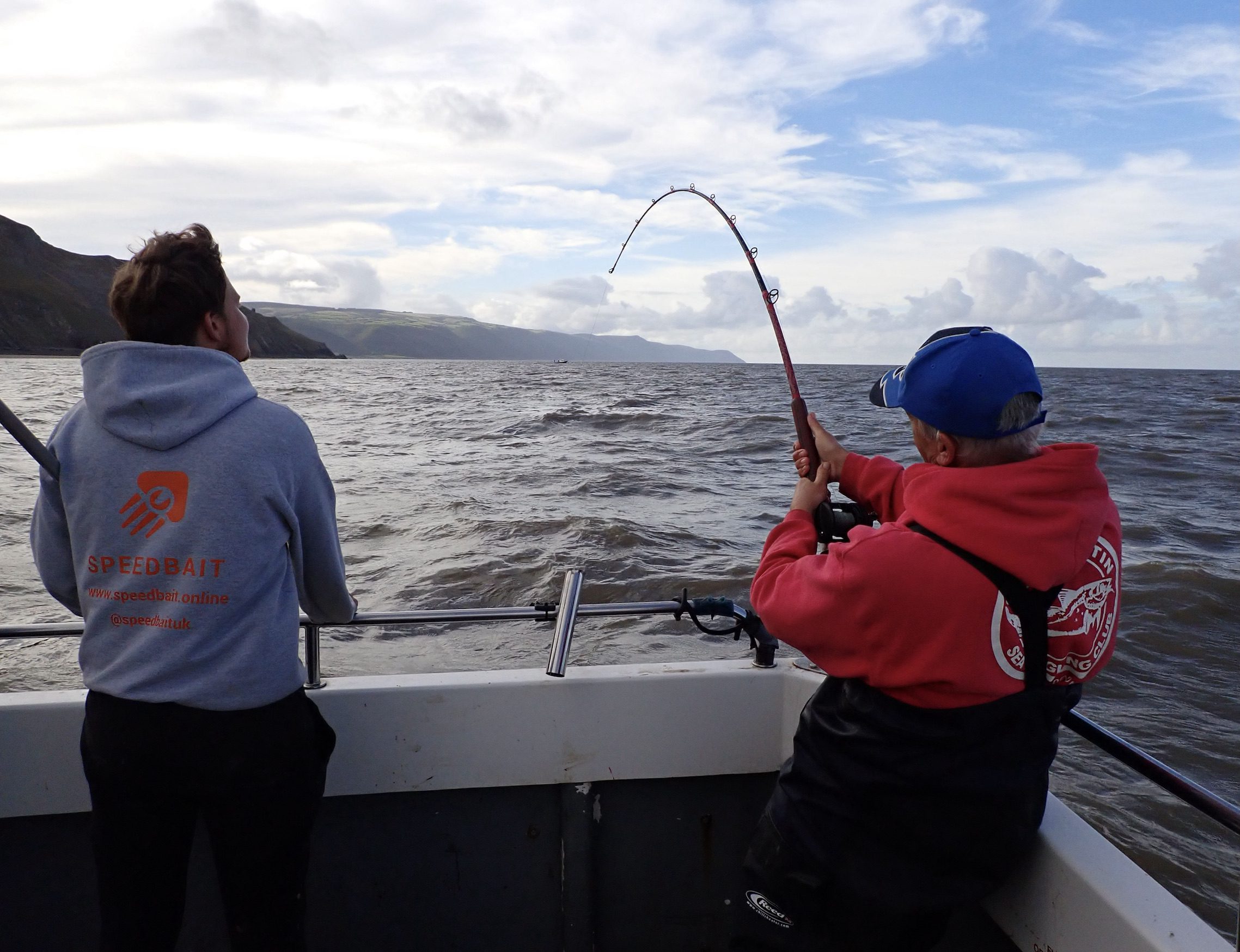
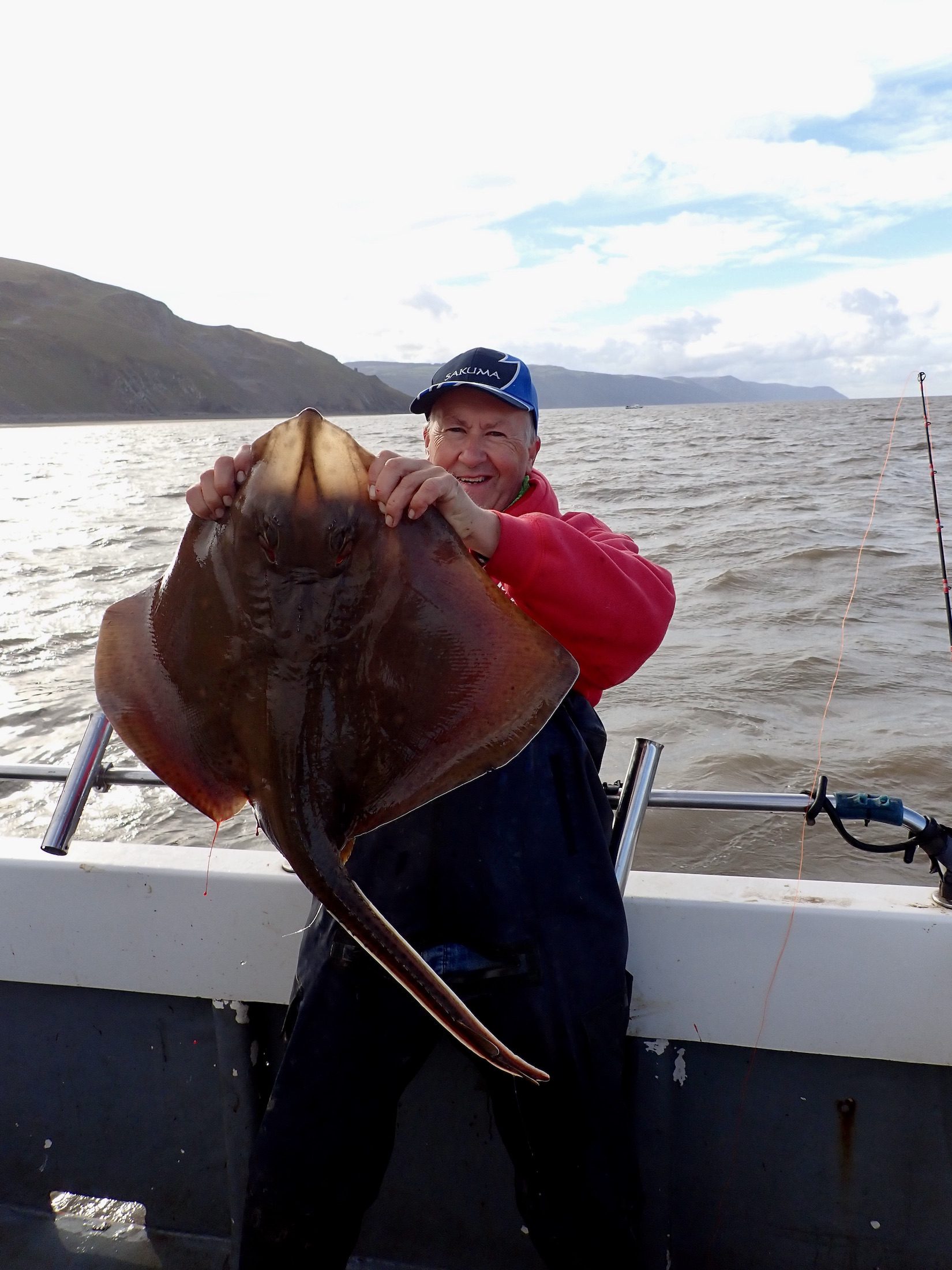
A few moments later it was Robs turn to do battle and this fish definitely deserved a number and was recorded at 16lb 3oz a specimen rating of 107%. Another blonde of close to double figure was also boated by our fellow boat fishers from Bristol.
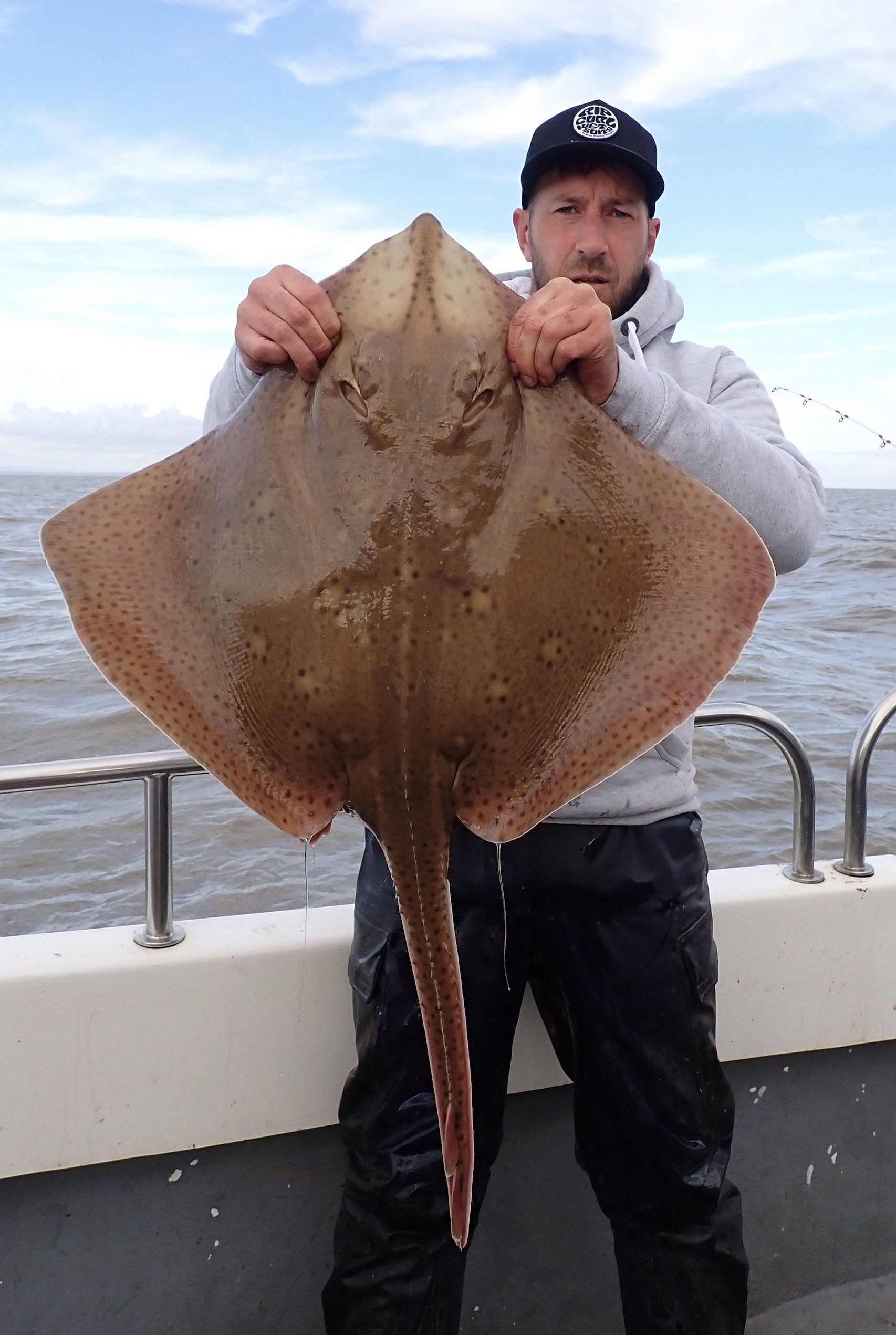
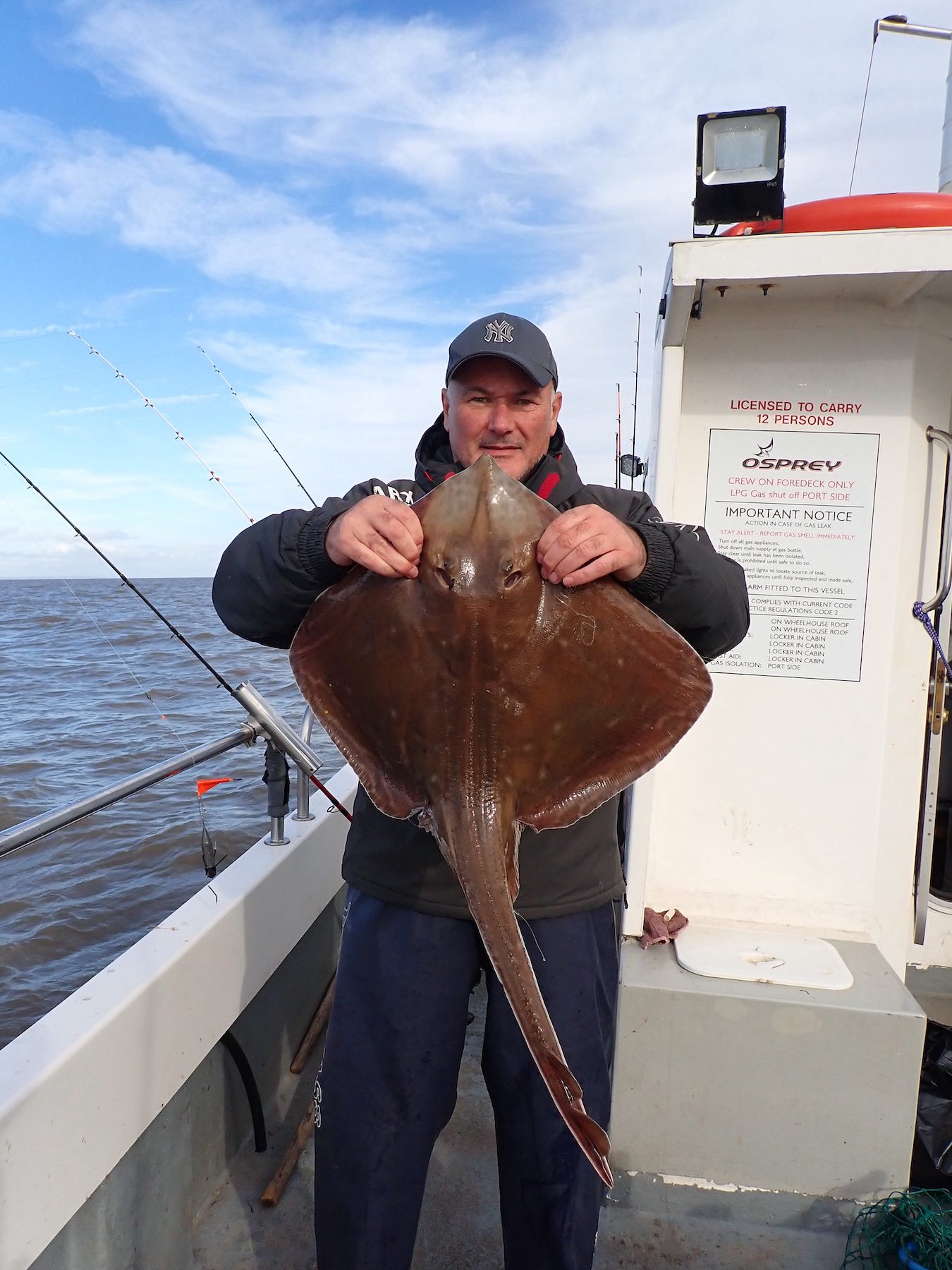
As the tide began to flood the bites again eased as the blonde ray appeared to switch off. It was now time to move once again to our final mark of the day half a mile or so off Dunster.
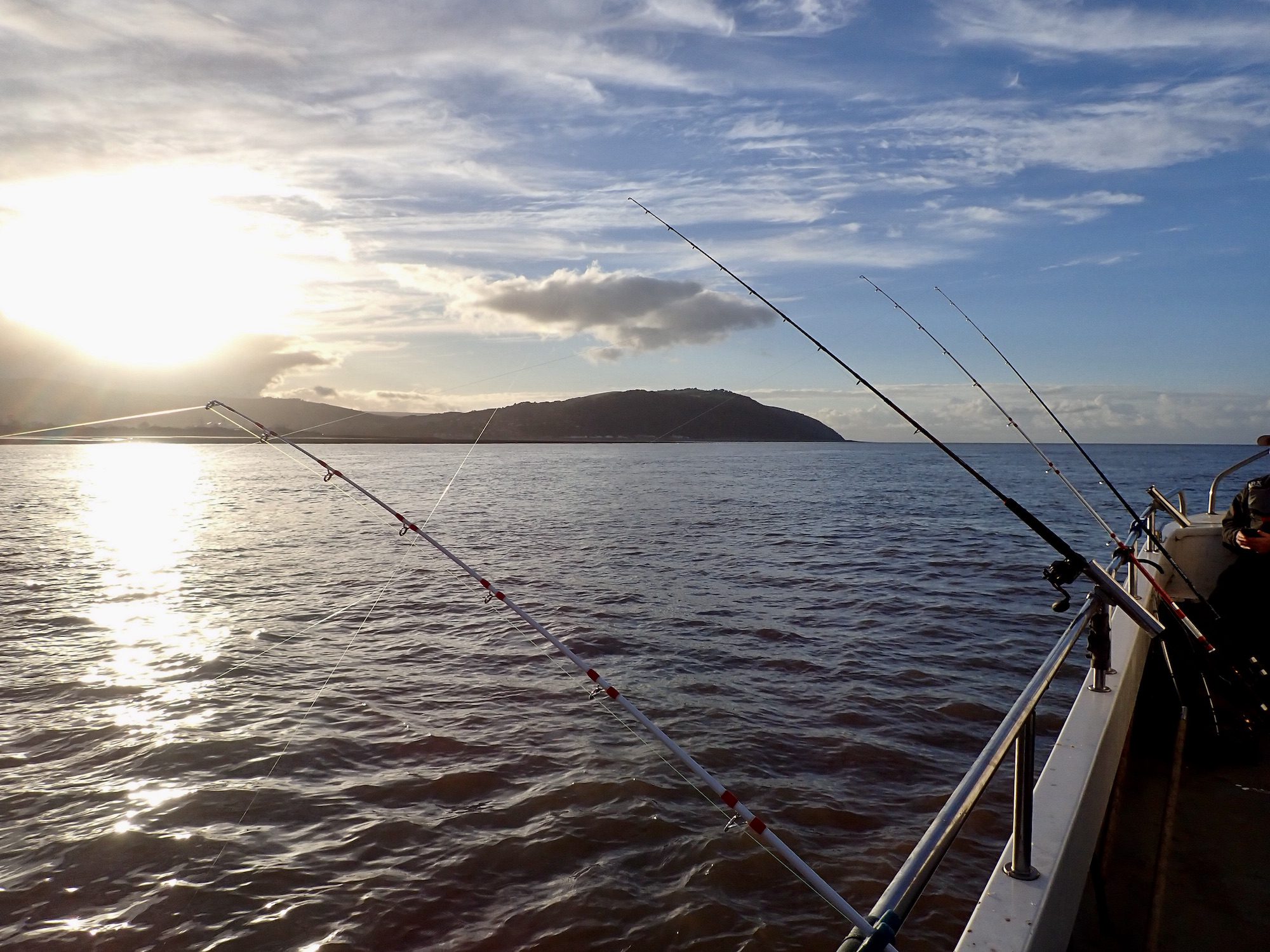
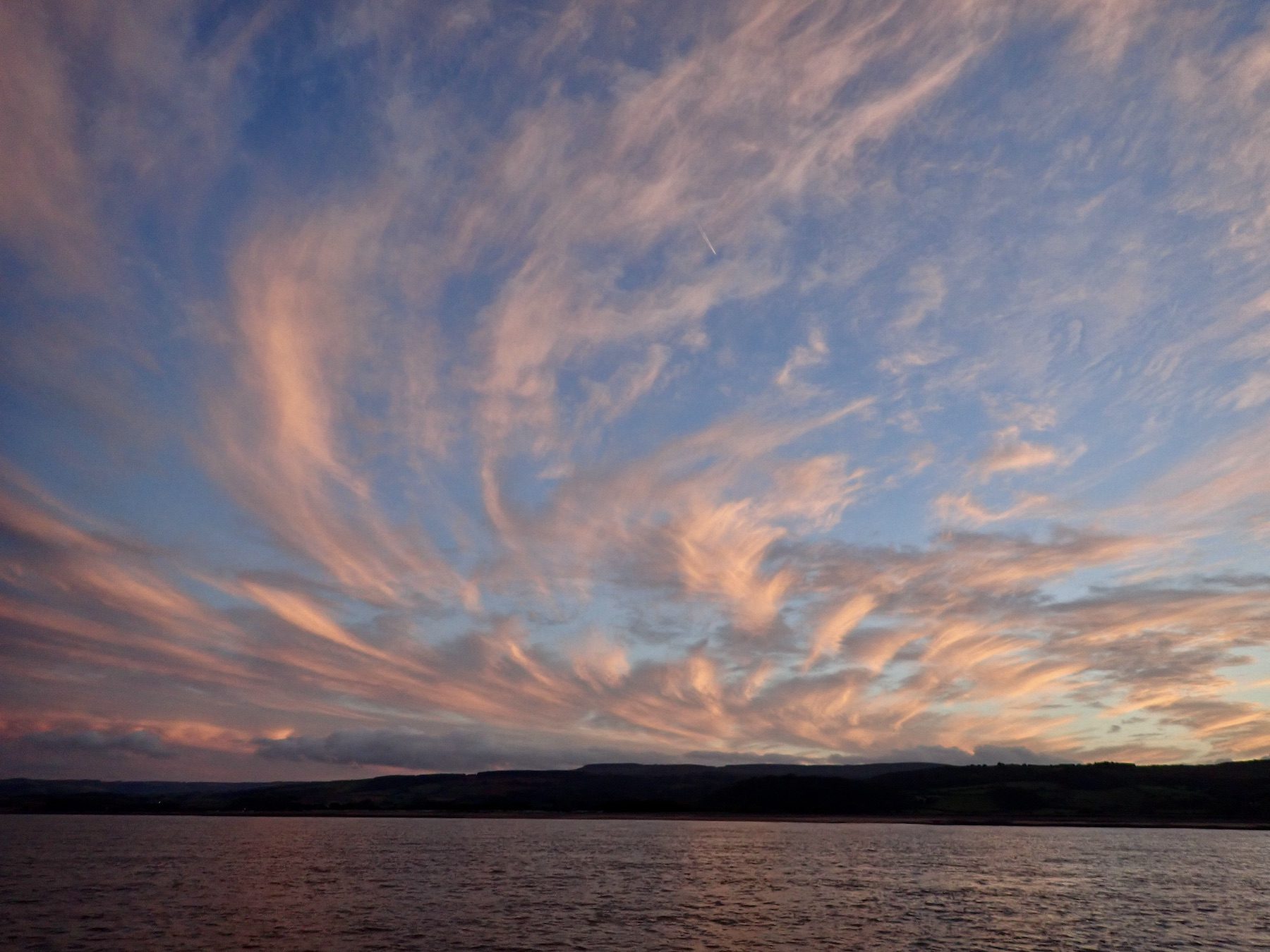
It was now early evening and the sky was painted in wispy pink clouds. We all savoured the magical fading light over fresh brews of tea and coffee. These moments of quiet contemplation and expectation are to some extent what fishing is all about.
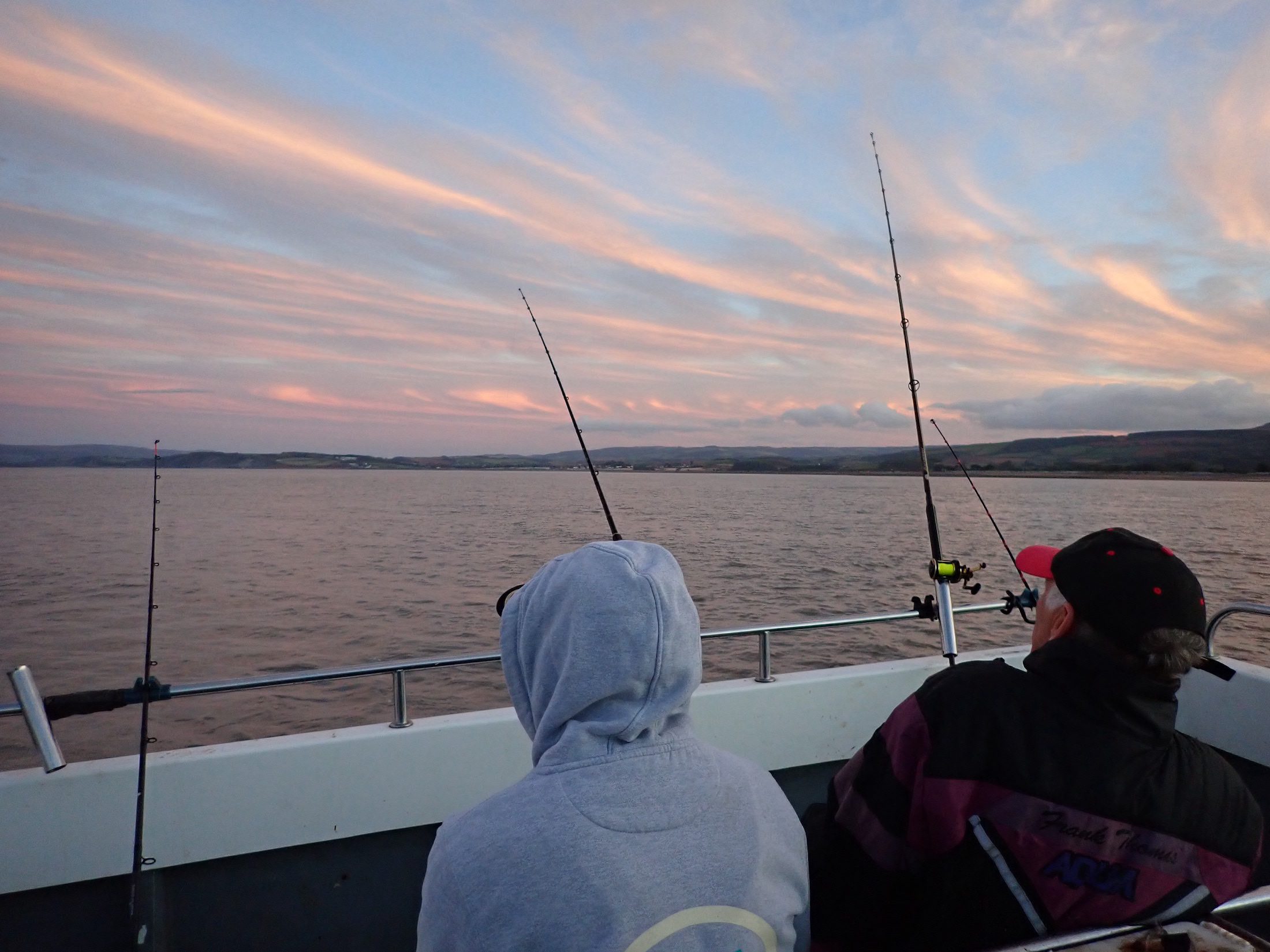
A few eels gave strong bites and tussles in the strong tide. A couple of thornback were also added to the days tally along with a hard fighting smoothound for Rob.
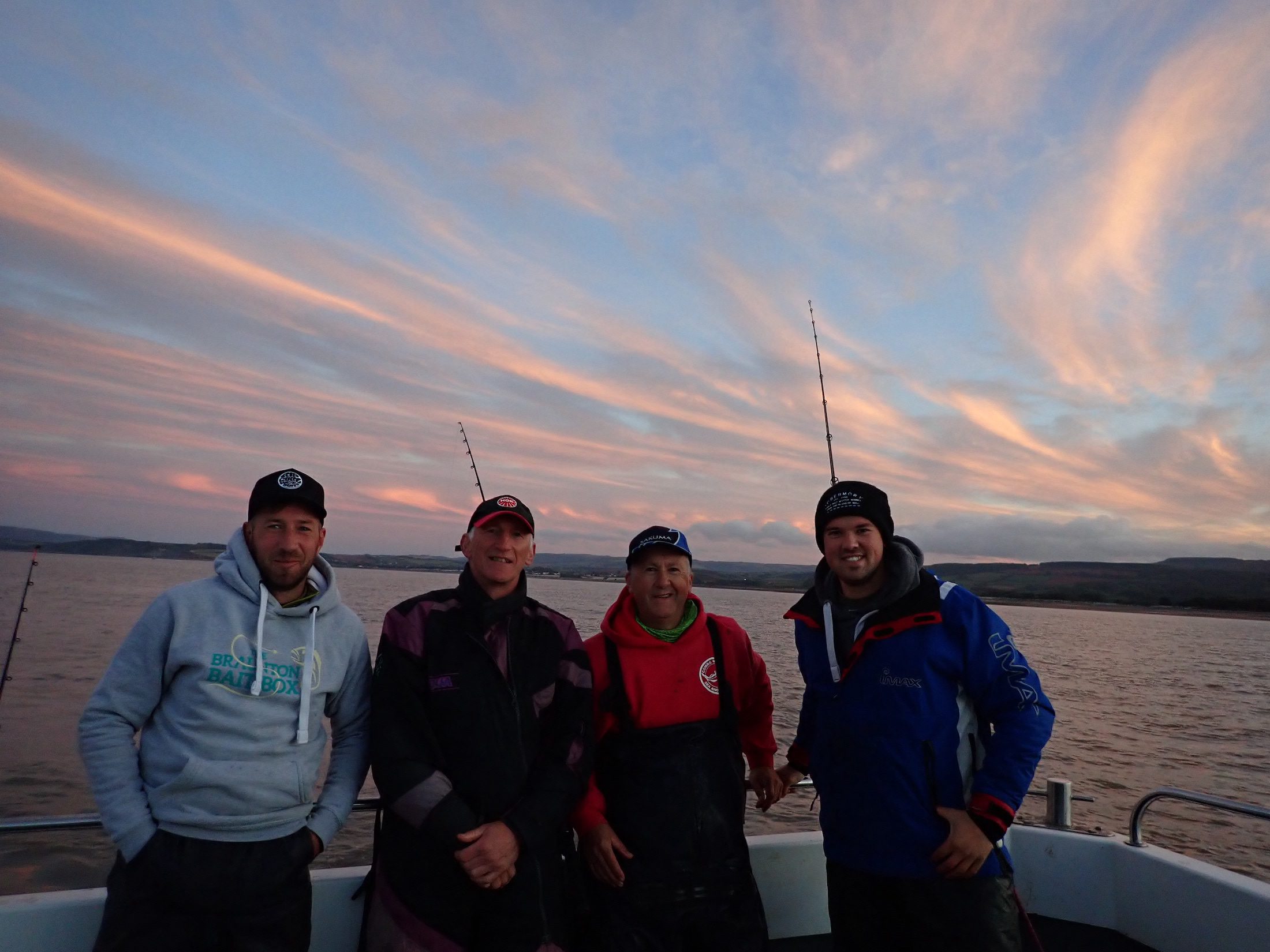
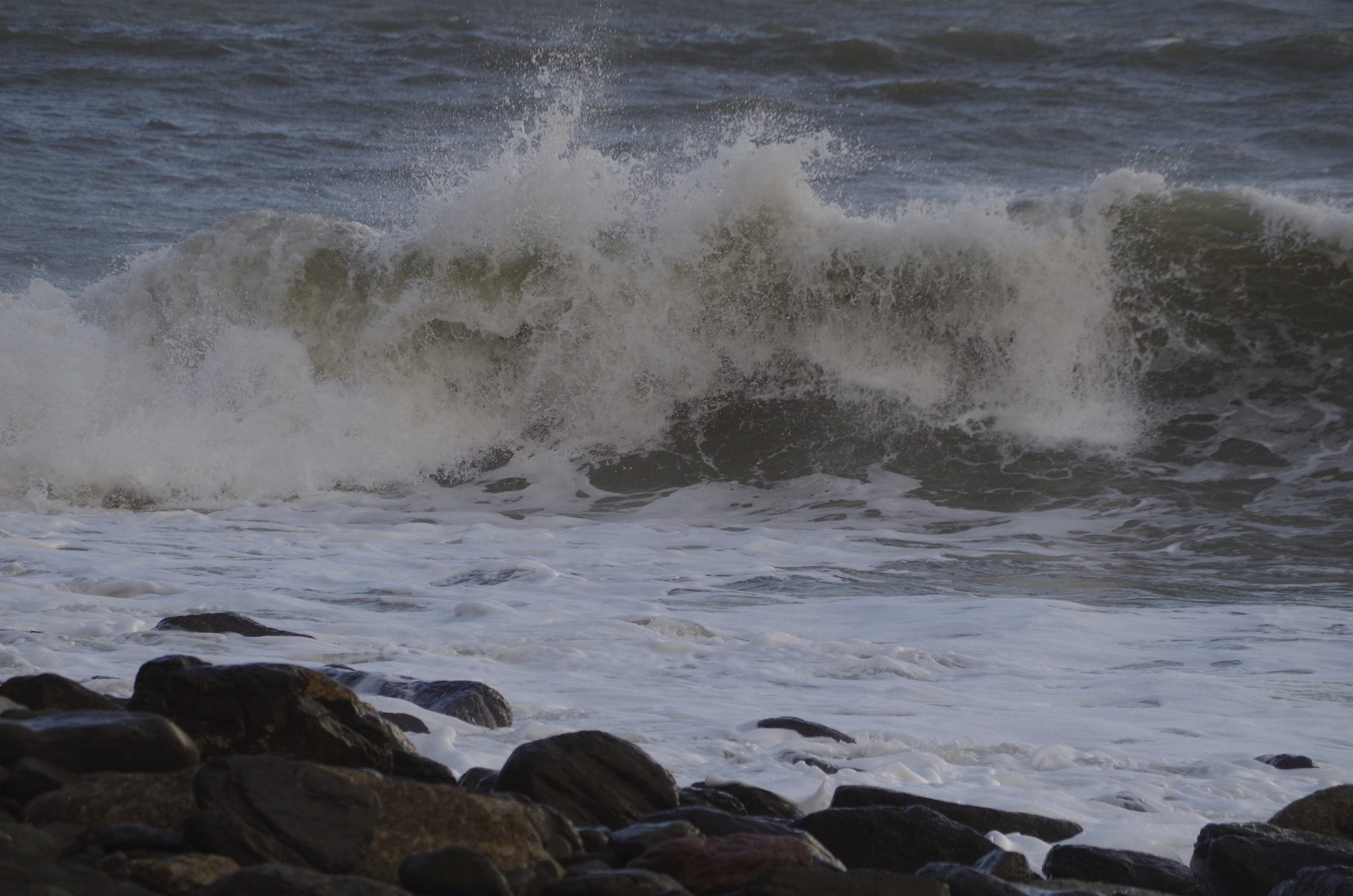
Many thanks to Combe Martin SAC member Jamie Steward for allowing me to use his account of a recent near miss on the rocks to highlight safety as we go into the autumn and winter sea angling season. Most sea anglers who have fished over many years will have had a few near misses, myself included. I have reproduced Jamies vivid account and added a few earlier words on safety from past posts. I dread having to report on the death of a local sea angler on my website or in the North Devon Journal. Please give safety a thought and consider investing in a life jacket they are not expensive. Anglers often pay hundreds of pounds for rods and reels yet seem reluctant to spend £100 on a decent life jacket.
Below Jamie Stewards vivid account of a near miss:-
Last night I saw my life flash before my eyes if it wasn’t for Ali Laird and the RNLI boats and helicopter. I probably wouldn’t be here. If you know me you know I likes my fishing and I was out with my mate Ali doing what we do, sea was rough and getting worse by the hour but being experienced fisherman we were very cautious and fished on. The session was steady catching a few fish here and there and then near top of tide I hooked a very decent Tope and managed to get it in onto the lower ledges, sea was fair angry at the point but I used the swell to my advantage and landed the tope on the ledge.. Ali wasn’t keen on grabbing it so me being me and knowing the size of the Tope decided I was gonna somehow land this beast. So off I went down to the bottom ledge timing it with the fall of the swell I grabbed her and had it in my arms. Knowing I had to get bk up super quick I turned around and boom I was smashed with a huge swell which launched me out in to the angry sea at this point I panicked.. the swell was rolling over my head I couldn’t breathe properly and I was swallowing water I managed to lay on my back and calm myself to think of a plan to get out and I felt the swell bump me in to the cliff a little further on so I took my chance and grabbed the rock and somehow pulled myself up far enough out of the sea and swells. This is where I stayed until the RNLI boats arrived but because the swell was so big they couldnt get near me so they called the helicopter which finally winched me out. I just want to say a massive thank you to everyone involved and for basically saving my life. I also wanna say to all my mates and fellow anglers please please please think twice before landing fish in rough seas and always put your safety 1st!! I will be a lot more cautious in the future that’s for sure! Respect the sea and stay safe. Ps I got away with few cuts to my hands a lost head light, bobble hat and Tope.
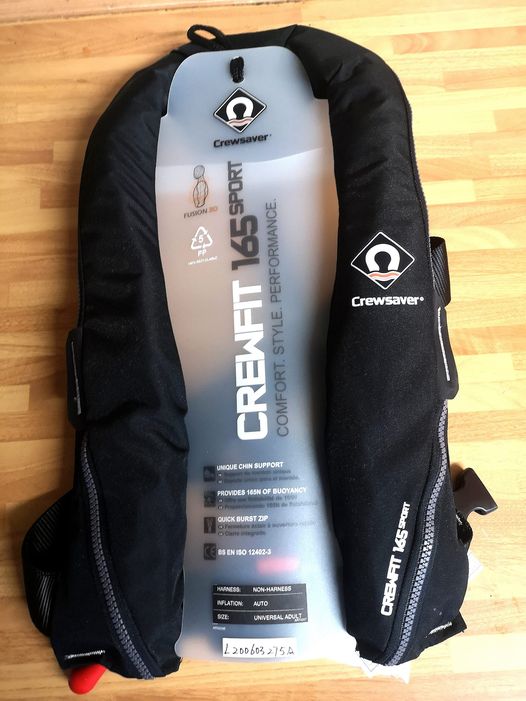
Henry Gilbey- writes on safety at sea.
Following on from the tragic deaths of two anglers the other day from a part of Cornwall I know very well and have fished plenty, well for some reason it’s really banged home to me that too many of us who fish choose to ignore the simple things we could be doing to give ourselves the best possible chance of surviving if and when something goes wrong. I have found a good contact at the RNLI and had an interesting chat with him about all this, and also why anglers like you and me are so resistant to wearing lifejackets out on the rocks for example. Also had a good talk with a lifejacket company about some of their products that would be most suitable for the sort of shore fishing I do etc. I never thought I would say this, but I am going to buy one of those compact and unobtrusive, auto inflate life jackets. Not sure which one yet, need to choose between a couple of makes and models, but I am looking at around £100-150 – think about what we spend on rods, reels, lures and waders for example. More to come about what I hope might be some food for thought. They found a body in Constantine Bay this morning, most likely the second angler who went in last week……………..
Once again there has been a tragic loss of an angler’s life on the North Cornish Coast an area well known for its huge swells. The North Devon coast is also pummeled by these same Atlantic surges and anglers must be fully aware of the risks. Each winter I remind anglers of the safe guidelines to follow. Always check the tide and weather before choosing where to fish taking into account the wind direction and both the time and size of the tide. If fishing from potentially slippery rocks consider the impact of heavy rain not just whilst fishing but also accessing the mark and leaving. Ensure that you tell someone where you intend to fish and your expected time home. Carry a mobile phone and keep it in a waterproof case. Always wear suitable footwear that gives a good grip metal studs can be excellent and cut through weed and algal growth. Modern lifejackets are lightweight and comfortable and significantly improve the chances of survival if you do fall in. When it comes to landing a big fish have a plan on how you will land it and carry a long-handled landing net or drop net. Alternatively use a strong enough shock leader to give a chance of lifting the fish safely from the water. I will repeat the frequently uttered quote no fish is worth losing your life for.
The whole world has been divided into 10 meter squares each with a unique 3 word combination. We are informed that all emergency services use it as well as the Council Highways dept and utility companies.
You can find the words applicable for your house (front door) and keep them by your phone for emergency use and of course with a mobile phone and the free download app you can report a fallen tree, water leak etc. very accurately as when you open the app it knows where you are and gives the 3 words.
You can expand and enlarge the map to your doorstep and find your unique 3 words.
Please do use this potentially lifesaving tool as we know that Postcodes are not unique.
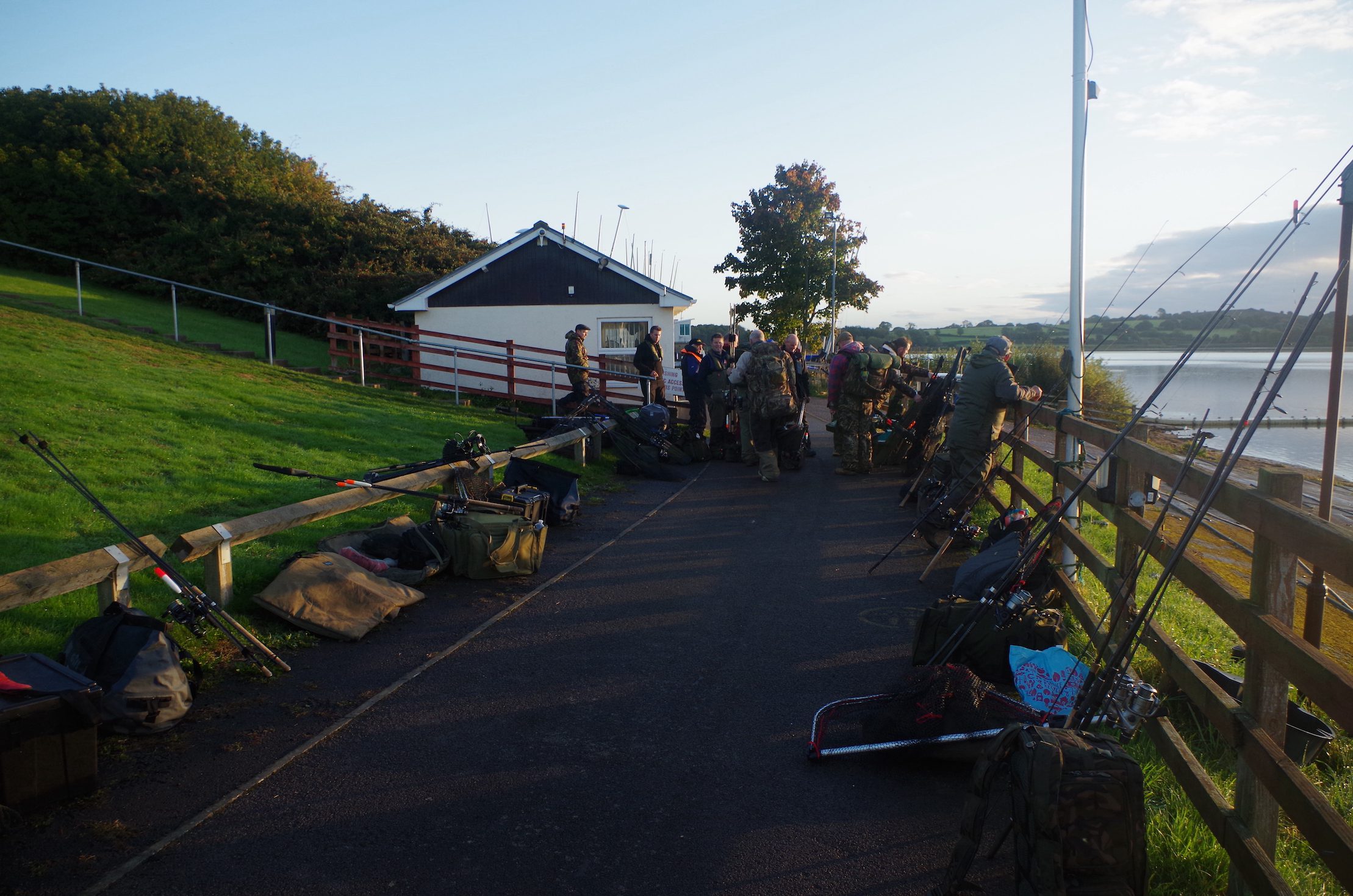
Chew Valley Lake 8:00am, it’s an excited gathering of anglers as always struggling to the boats with masses of piking tackle. There were the normal sprinkling of BIG NAMES in pike fishing amongst the eager group. I Have fished Chew on numerous occasions since it opened to pike fishing in October 2001 and always relish the challenge.
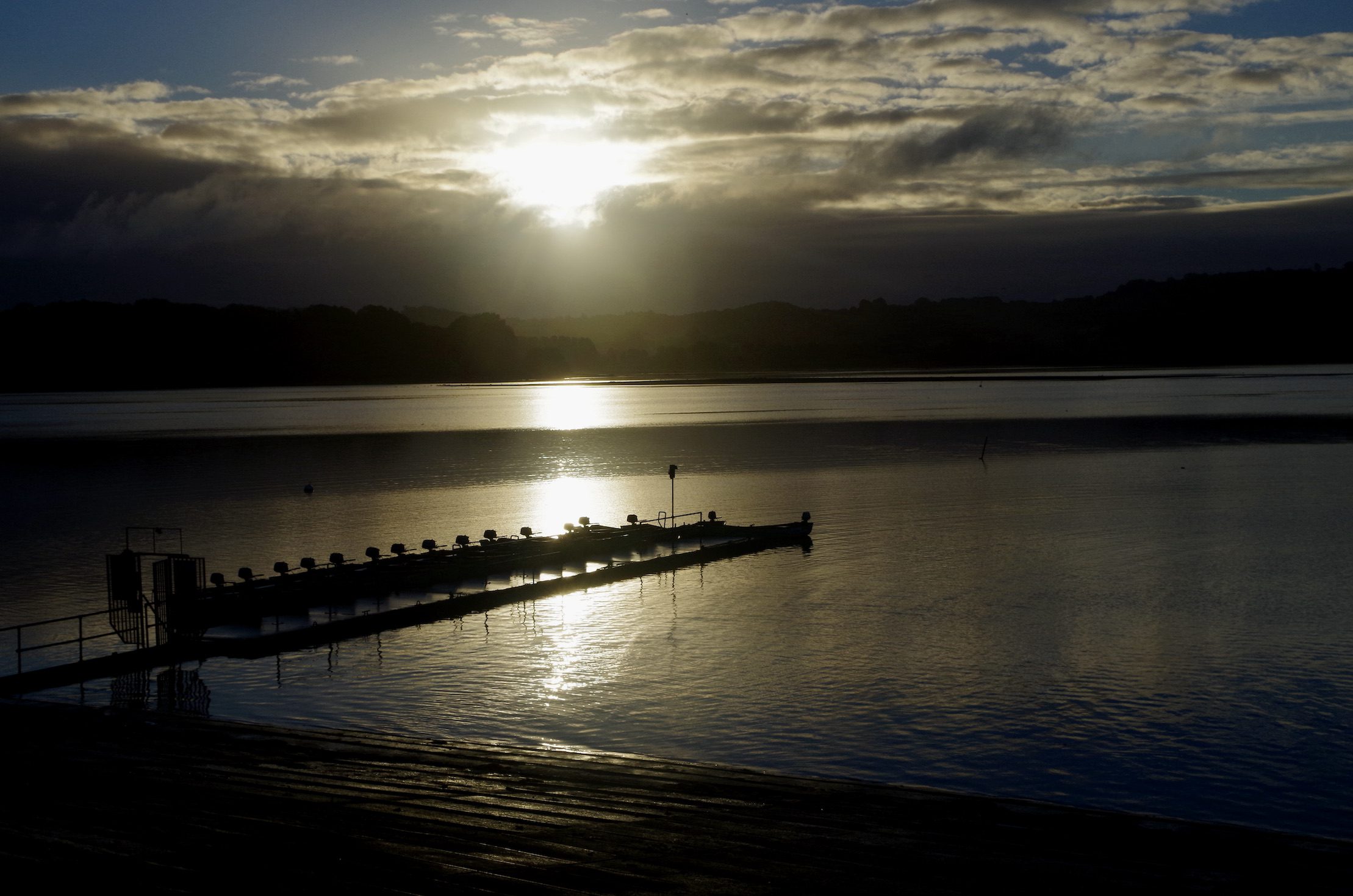
The early morning sun illuminated the vast lake as Bruce Elston and I loaded our gear into the boat. We discussed where we would fish and decided to go against the general wisdom and head for deep water close to the dam. The well known Stratford area would undoubtedly be packed with boats and we just didn’t want to be amongst the crowds. Big pike have been caught from all around Chew Valley Lake so whilst location is the key it is a big lake and it might not always pay to follow the crowds.
To some extent my approach to fishing has changed over the years and enjoyment of the day is undoubtedly my number one aim. This may to some extent have been influenced by catching a 38lb pike earlier in the year a fish of a lifetime that I may never surpass. That fish was caught on a fly and both Bruce and I now question the benefits of targeting the pike during the trials at a higher cost when the fish can be caught on fly tackle.
That said there is something special about watching floats bobbing upon a lake and the expectation of their disappearance at any moment. I cannot say for certain which approach I prefer or which is the. most effective.
We agreed to troll lures on the way to our first location and were rewarded with a jack each. Using an echo sounder we located the boat close to where the bottom contours indicated a significant drop off. We then dropped anchors to ensure the boat remained stable and cast out dead-baits spread around the boat. It was now time to pour a fresh coffee and gather our thoughts.
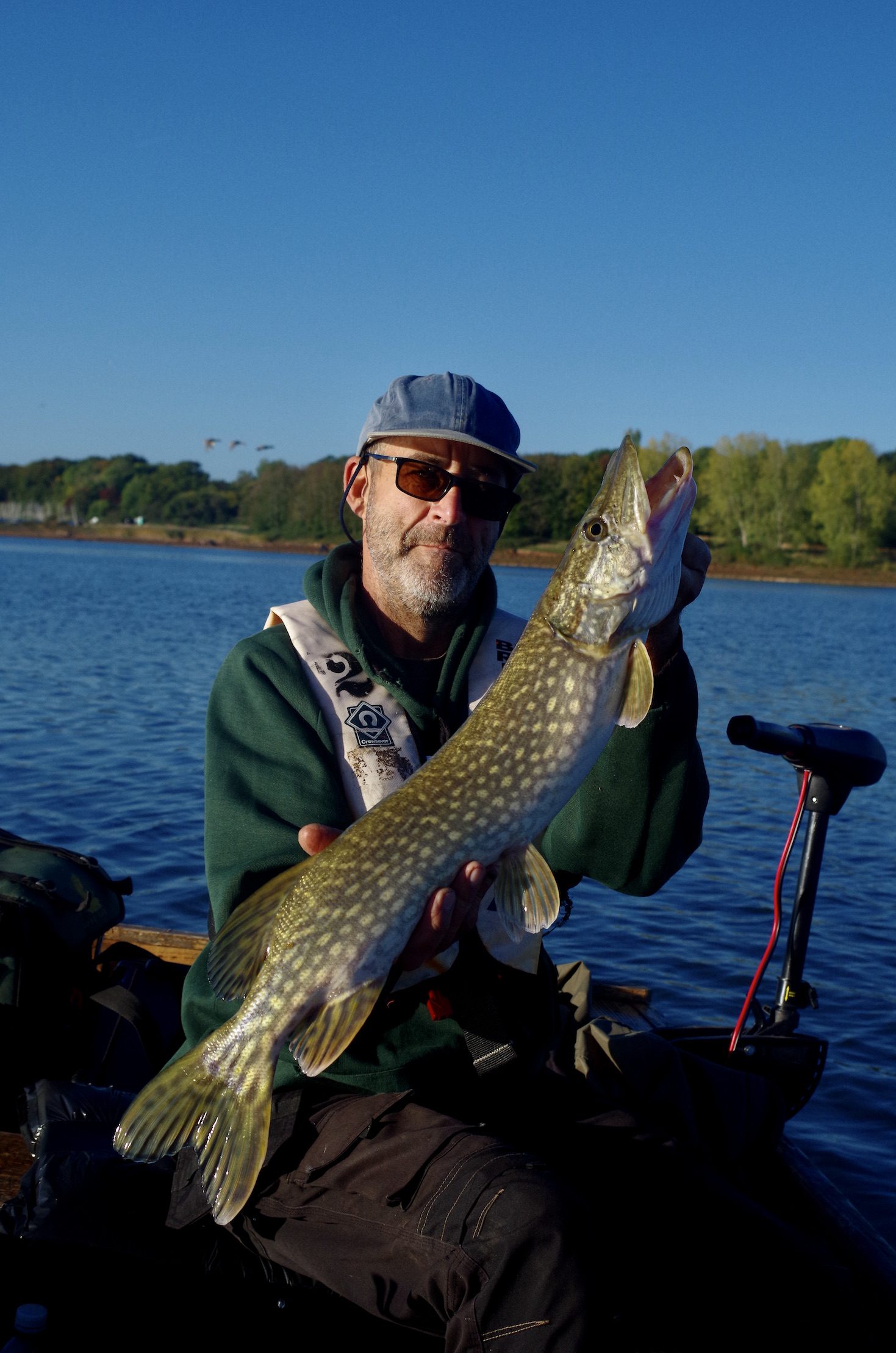
Bruce was first into a fish on a horse mackerel dead bait a small jack of perhaps 4lb.
The conditions were certainly very pleasant for early autumn with a gentle breeze and brilliant blue sky.
After an hour anchored up with dead baits and the occasional search around with various spinners we decided upon a move to a bay further along the West bank.
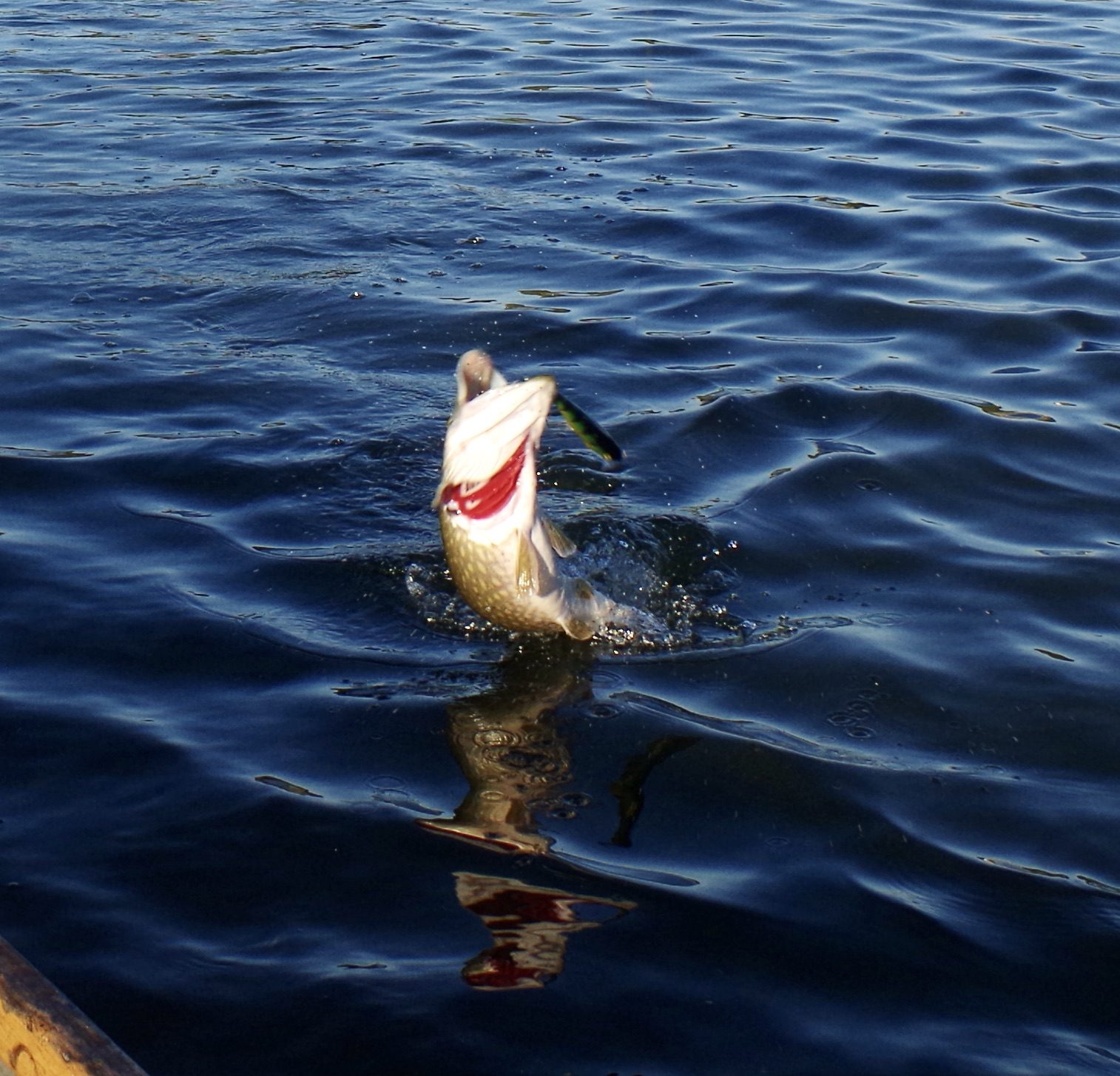
After dropping anchor, I had a cast with the lure and immediately connected with a pike of around 8lb. We enjoyed further success from this location with Bruce adding another couple of jacks to dead-baits.
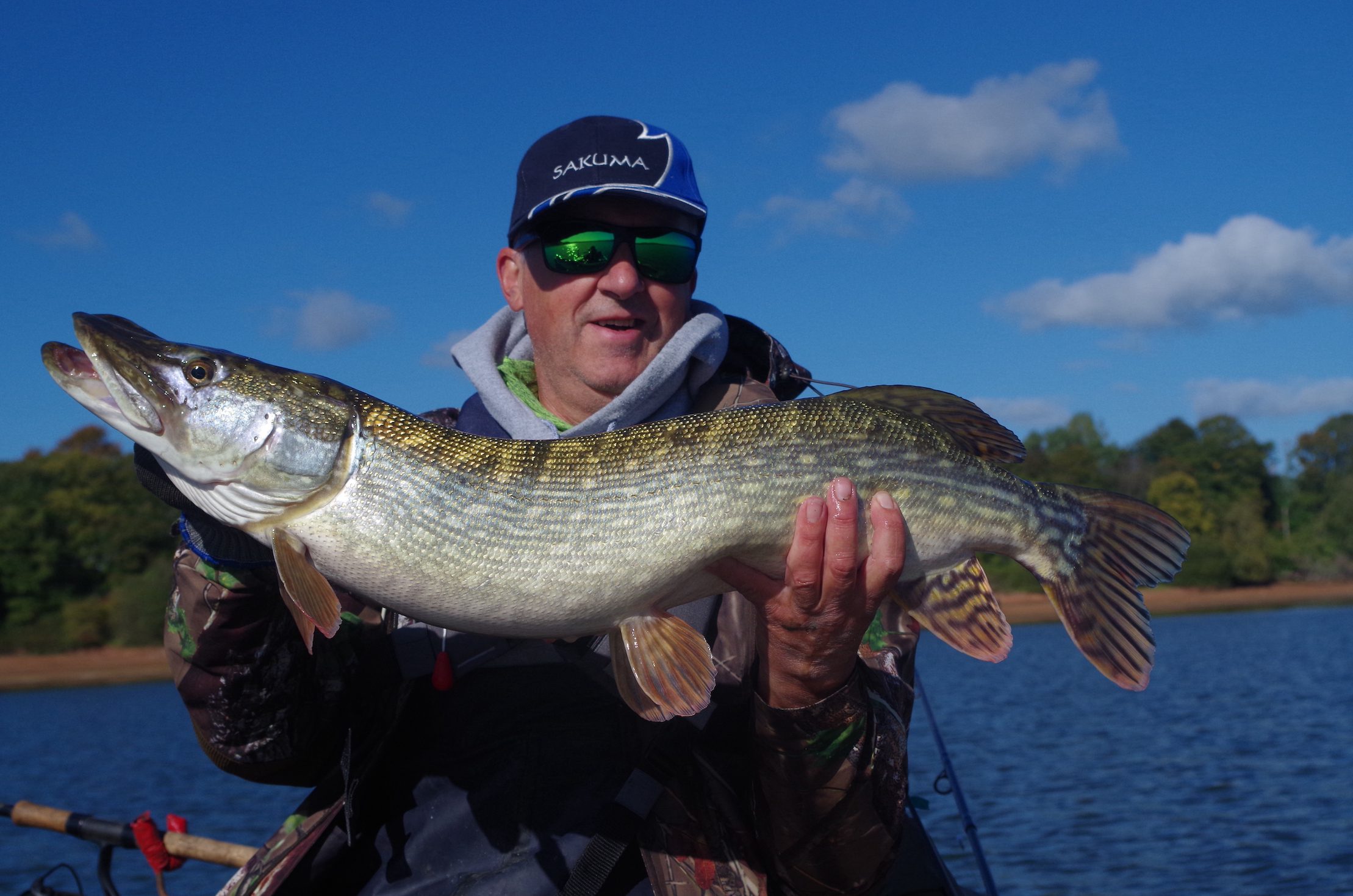
Throughout the day we tried a few different spots, trolled a bit and varied our lures searching each area carefully. The autumn colours were showing on bankside trees. Swans and geese occasionally flew over and grebes glided on the water hunting for fish. High in the sky large planes flew to a fro from nearby Bristol Airport and wondered where they were headed?
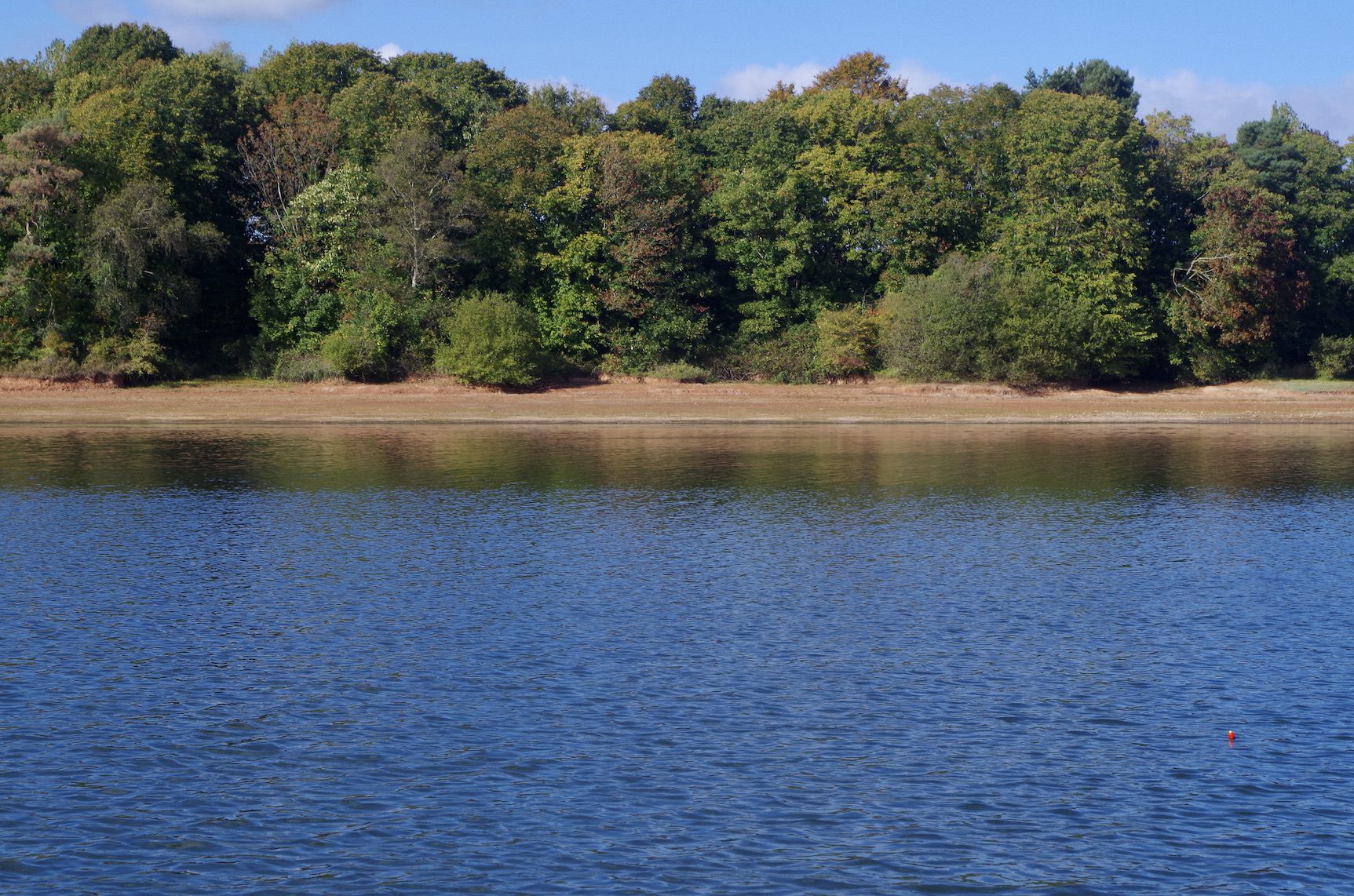
Bruce and I both watched our pike floats intently willing them to disappear. Time as always ebbed away and our dreams of monster pike slowly evaporated as the sun sank in the Western sky.
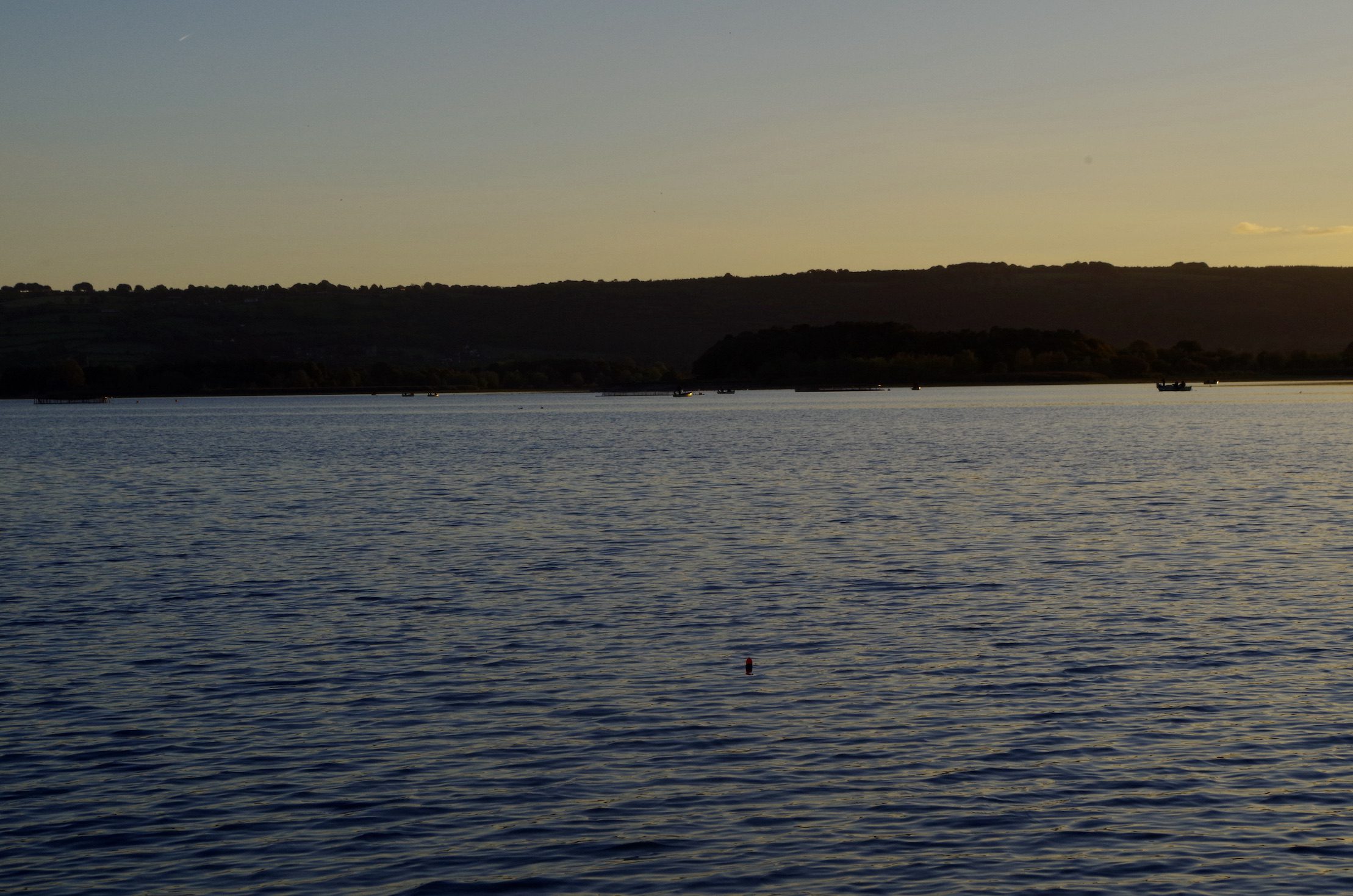
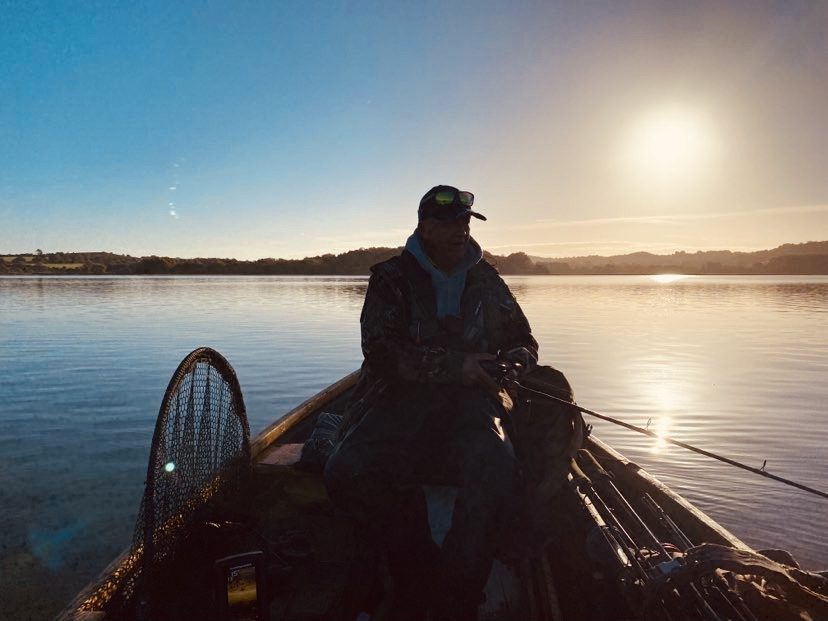
We had boated 14 jacks between us, ten to Bruce and four to me.
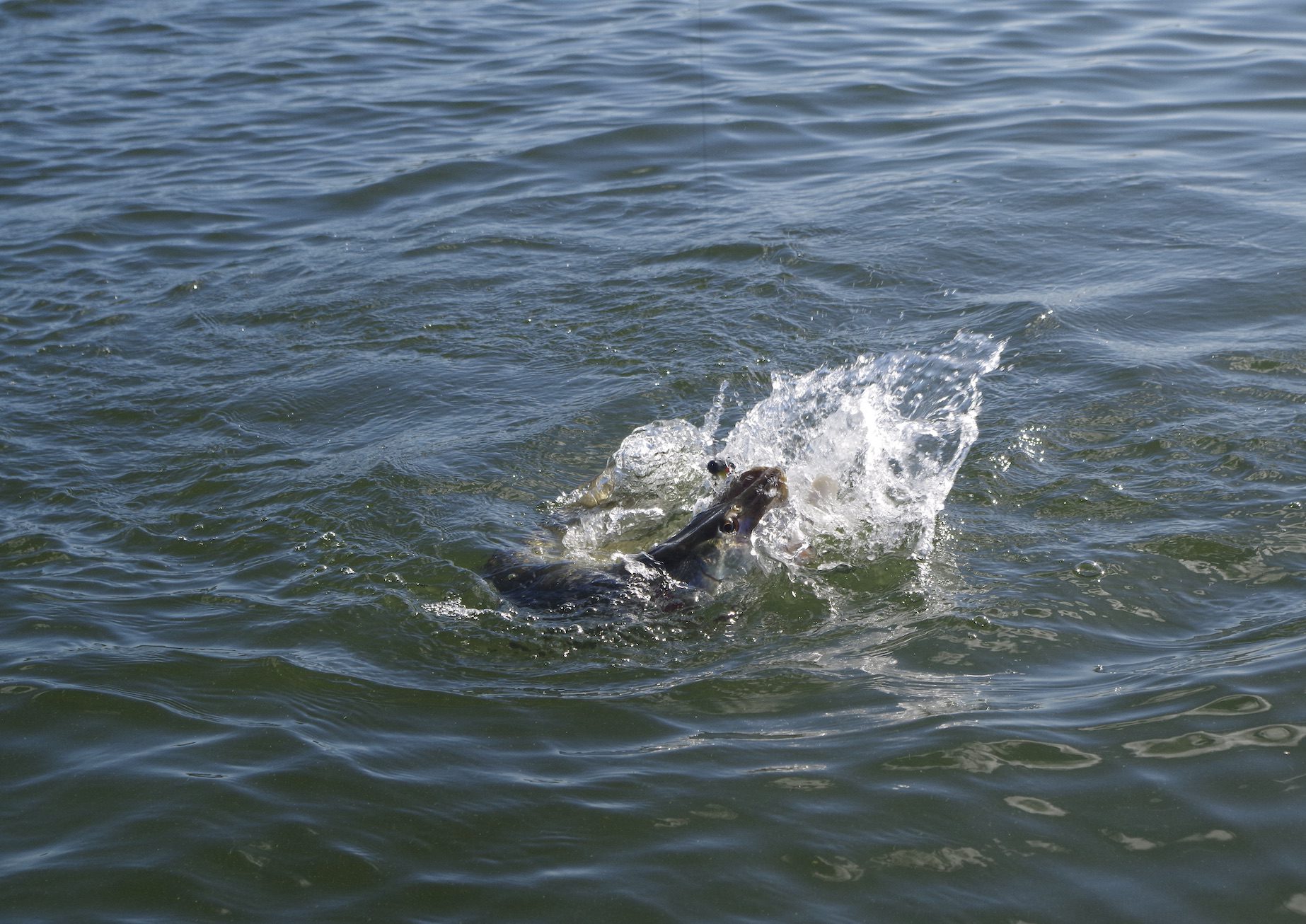
Bruce fished with his good friend Stuart Calder the following day. They chose to anchor up in the renowned Stratford area as thick mist hung over the lake. Early in the day Stuart boated a fine pike of 26lb 10oz. Bruce blanked. Chew is a big lake and each day deals a different hand there are many variables that go to make the game so fascinating and addictive.
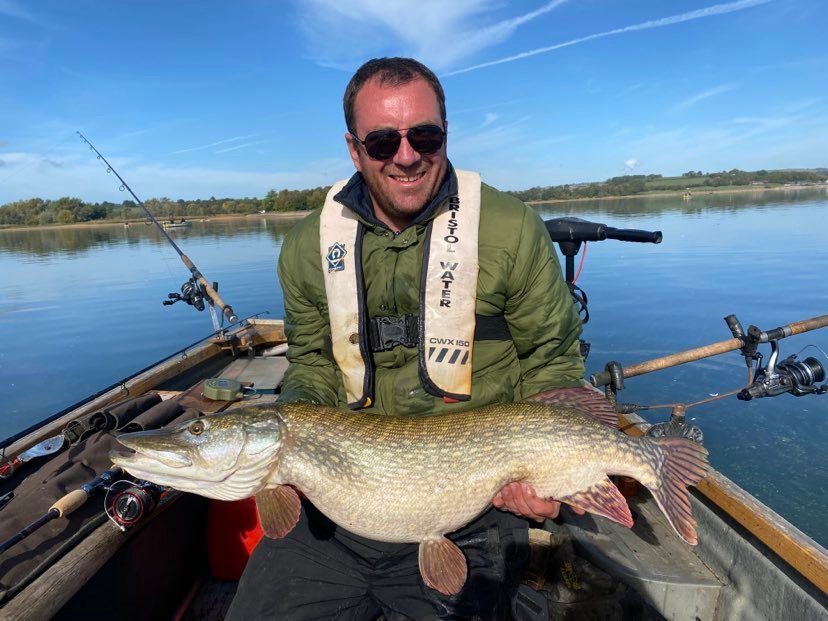
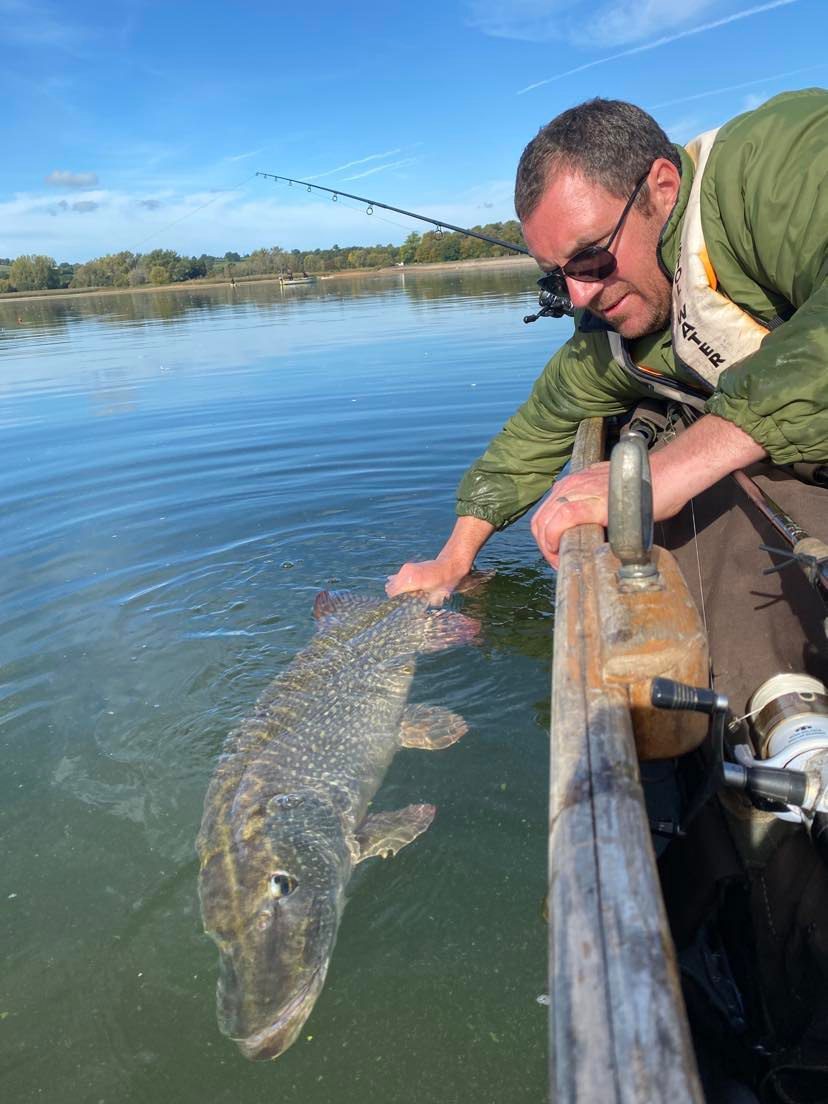
We will be back in the Spring Fly rods in hand casting in hope and hopefully connecting with one of those famous Chew Valley Giants.
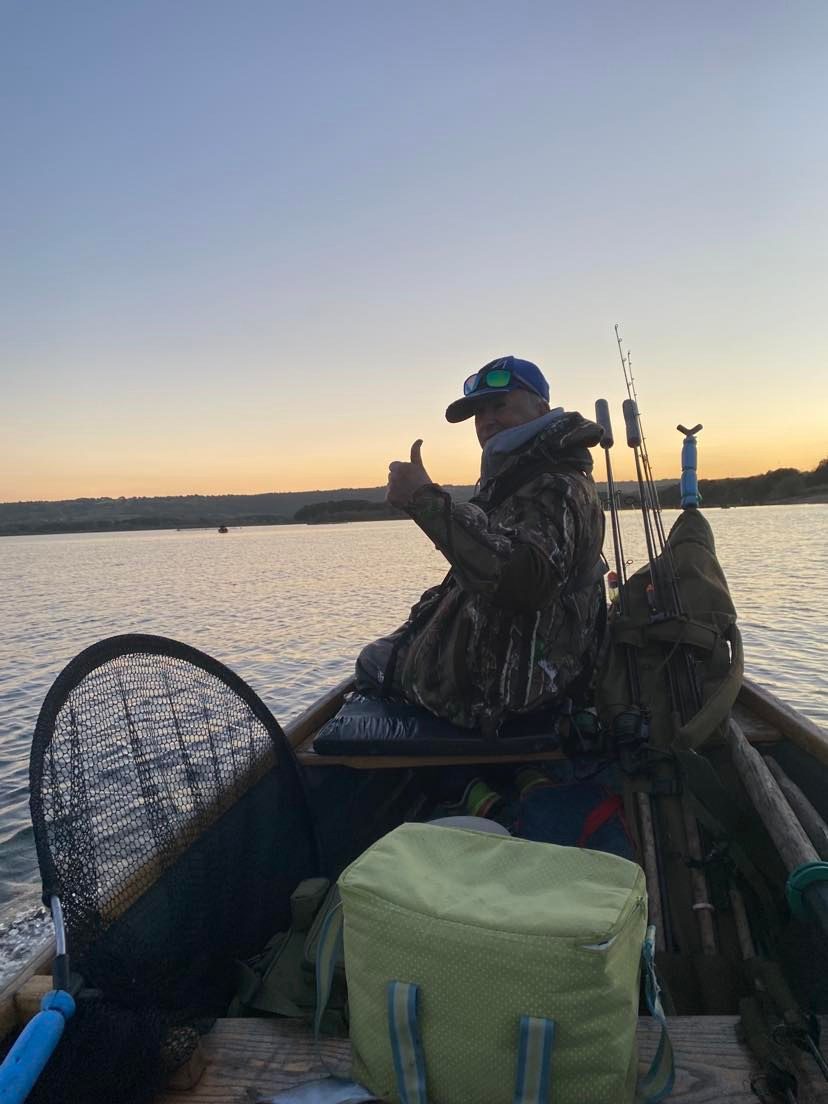
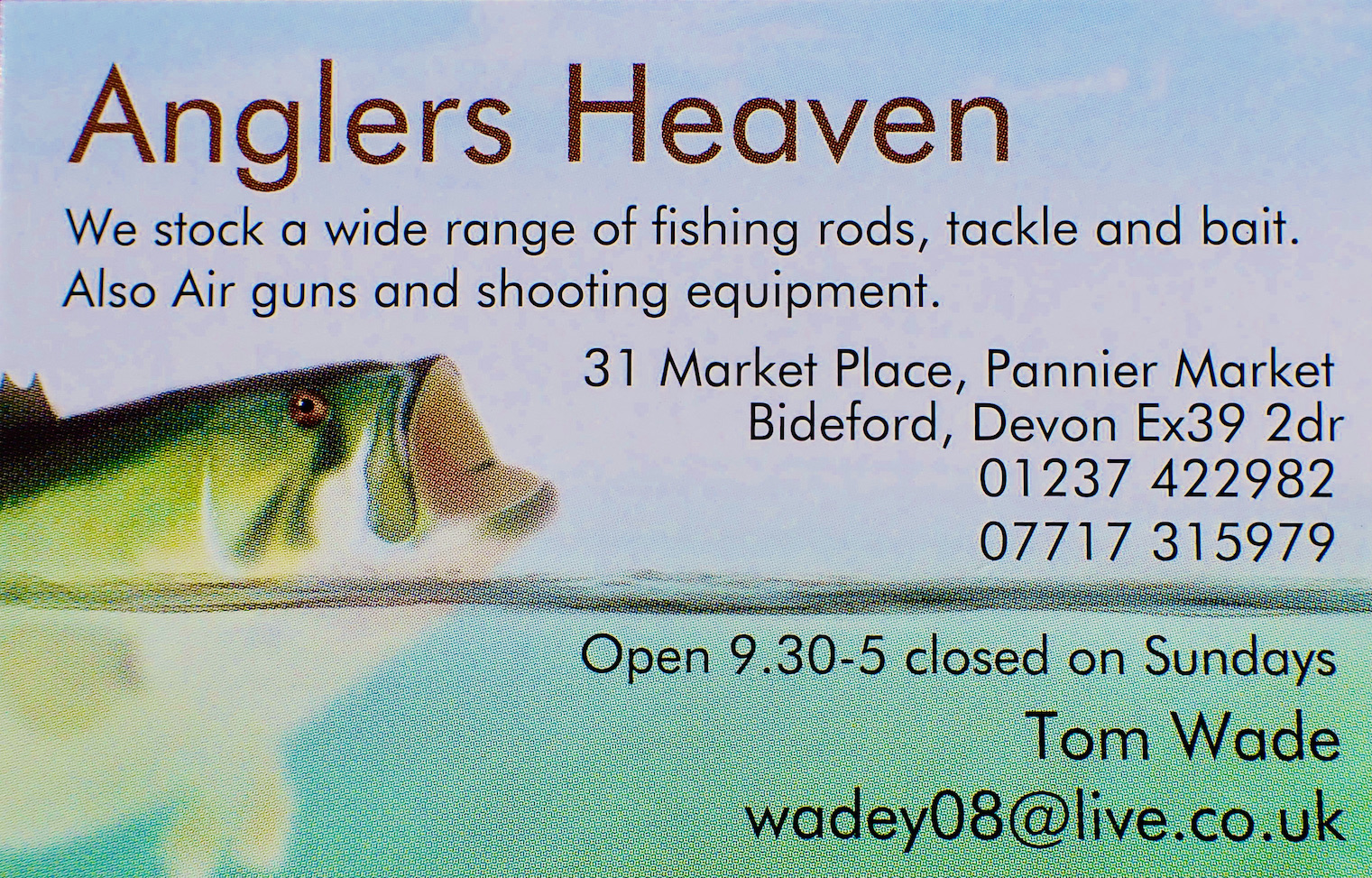
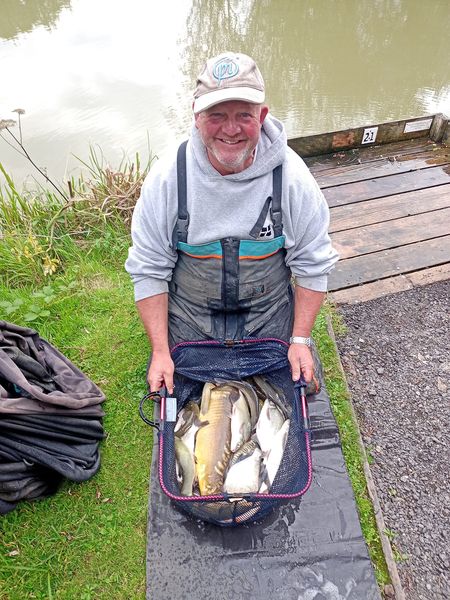
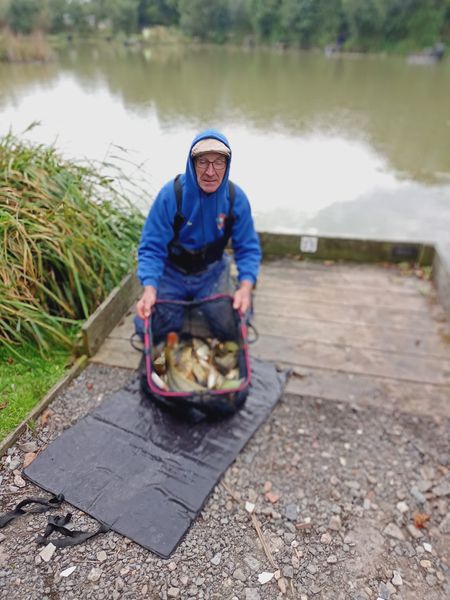
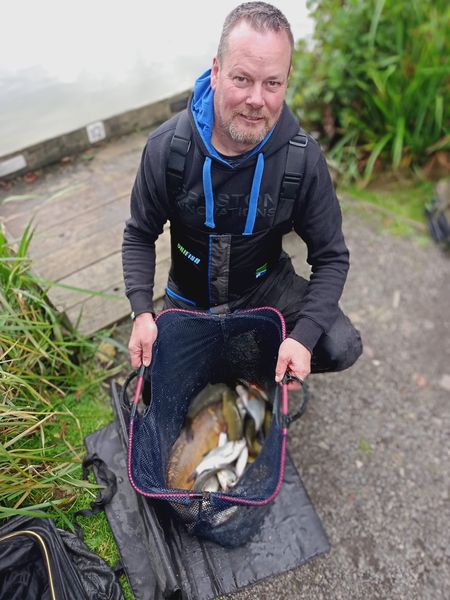
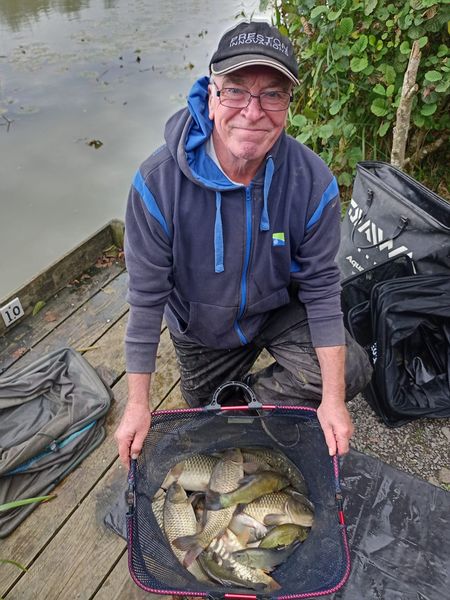

Daniel Welch dominated Combe Martin SAC’s Lyn Fish competition taking the top three places with grey Mullet of 5lb 5oz, 3lb 8oz and 3lb 2oz. His son Solly also enjoyed success tempting a mullet of around 2lb.
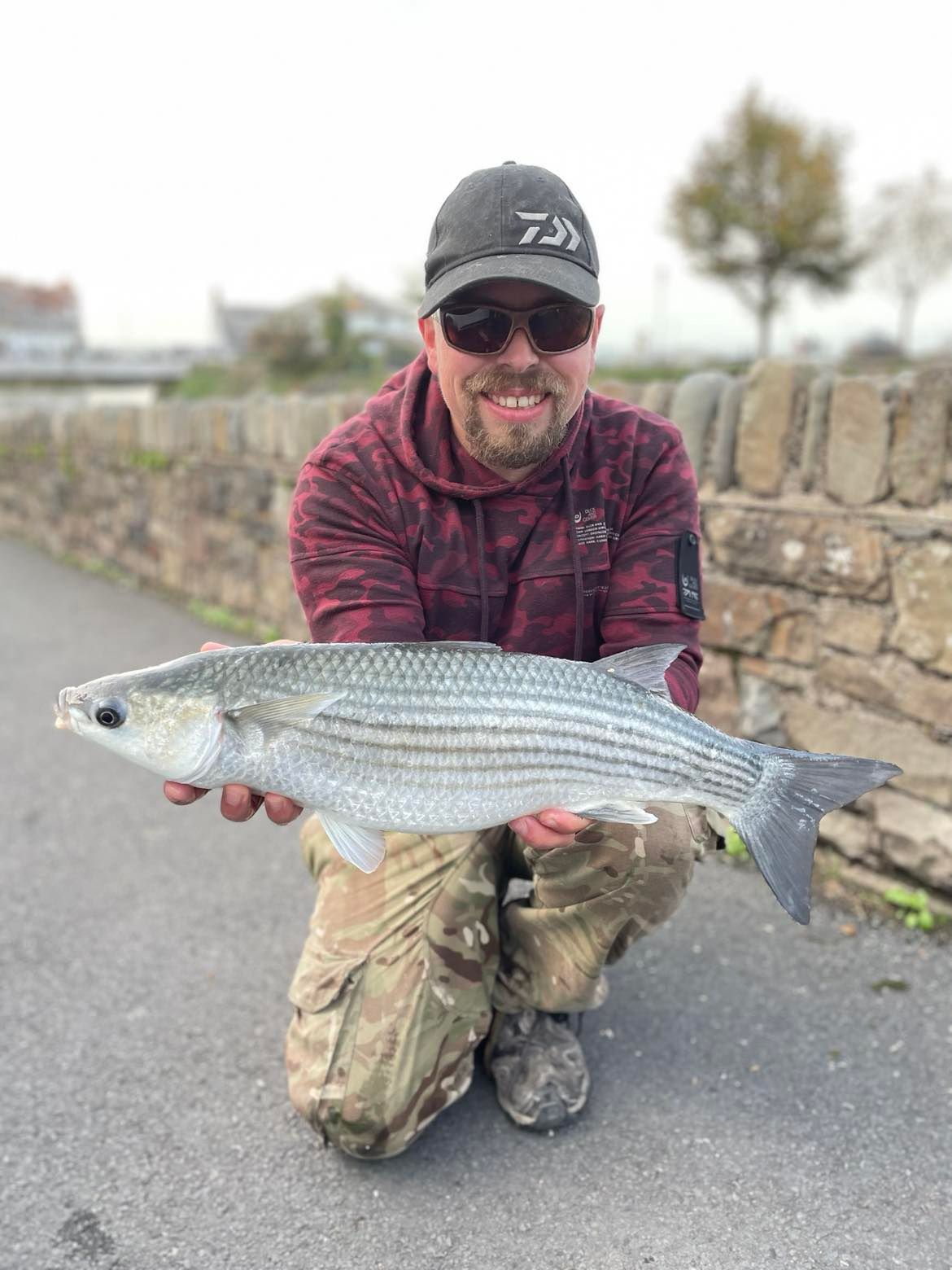
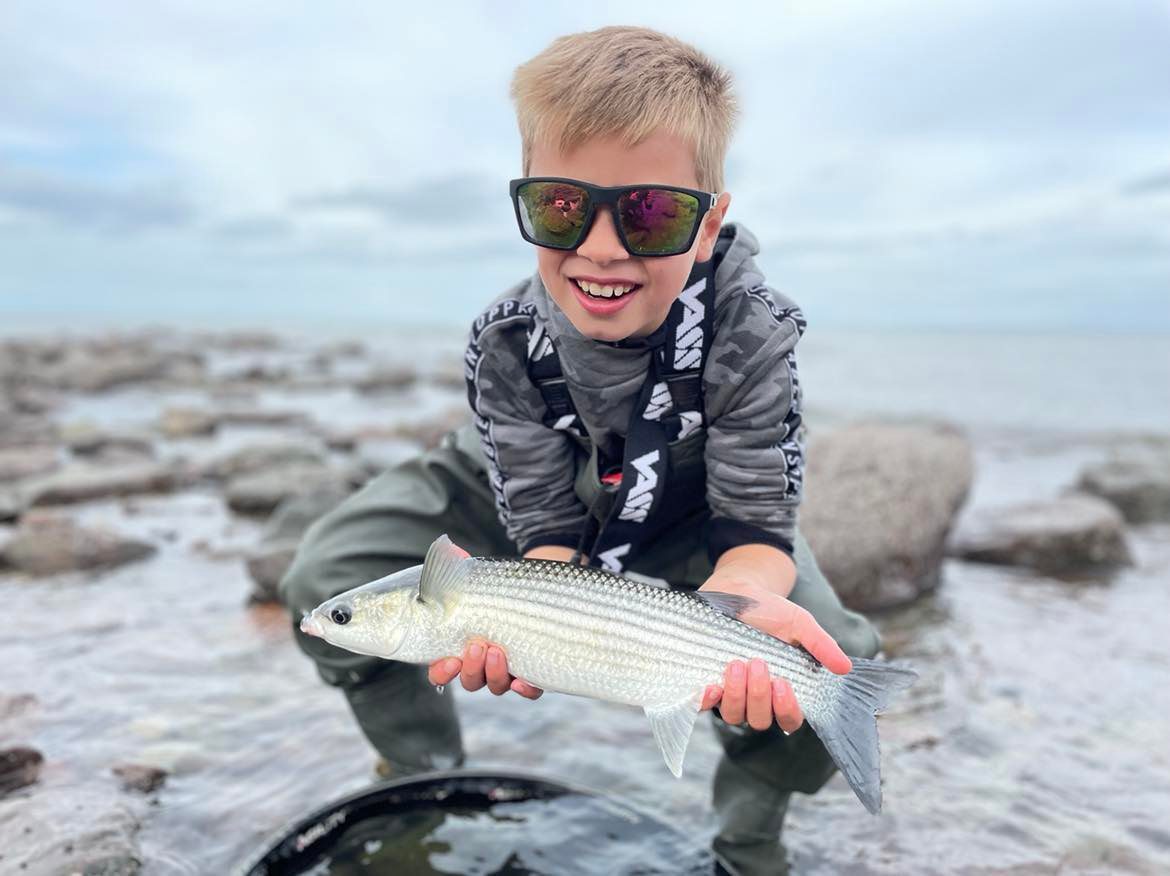
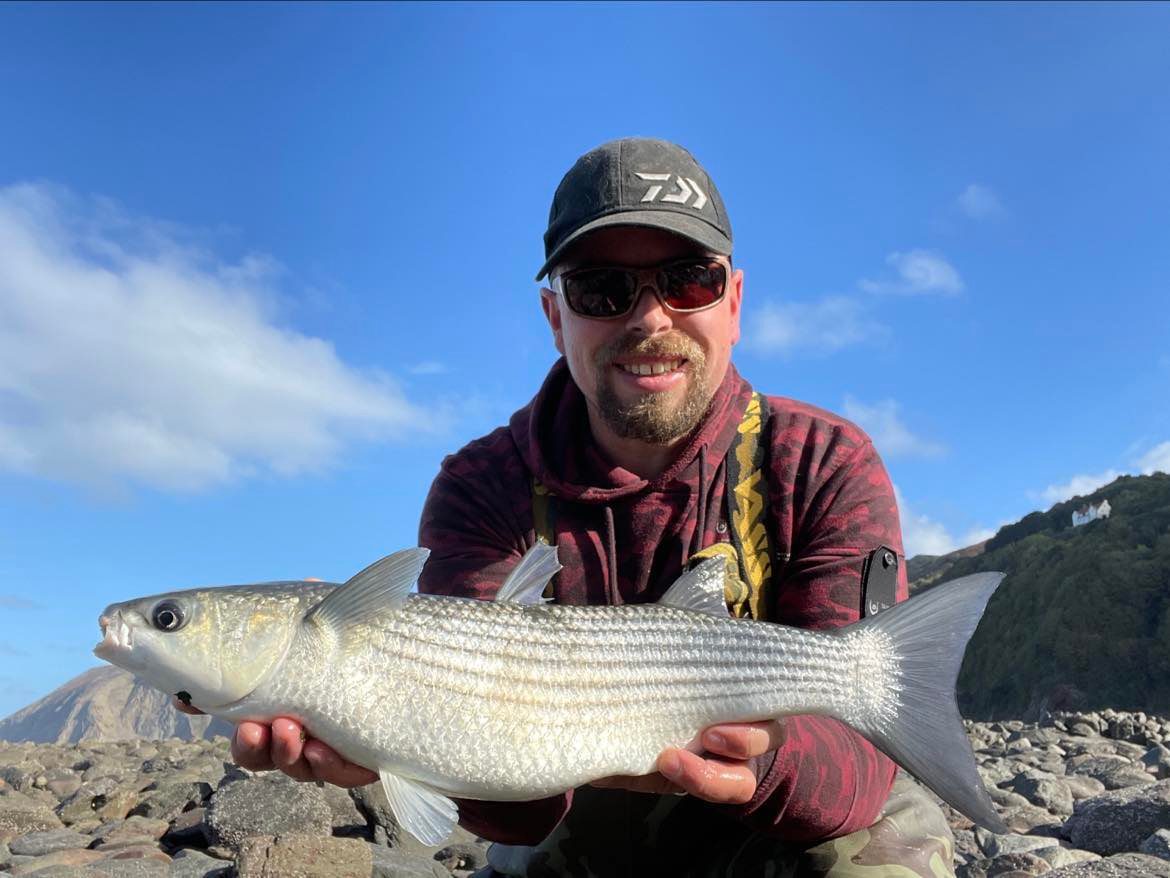
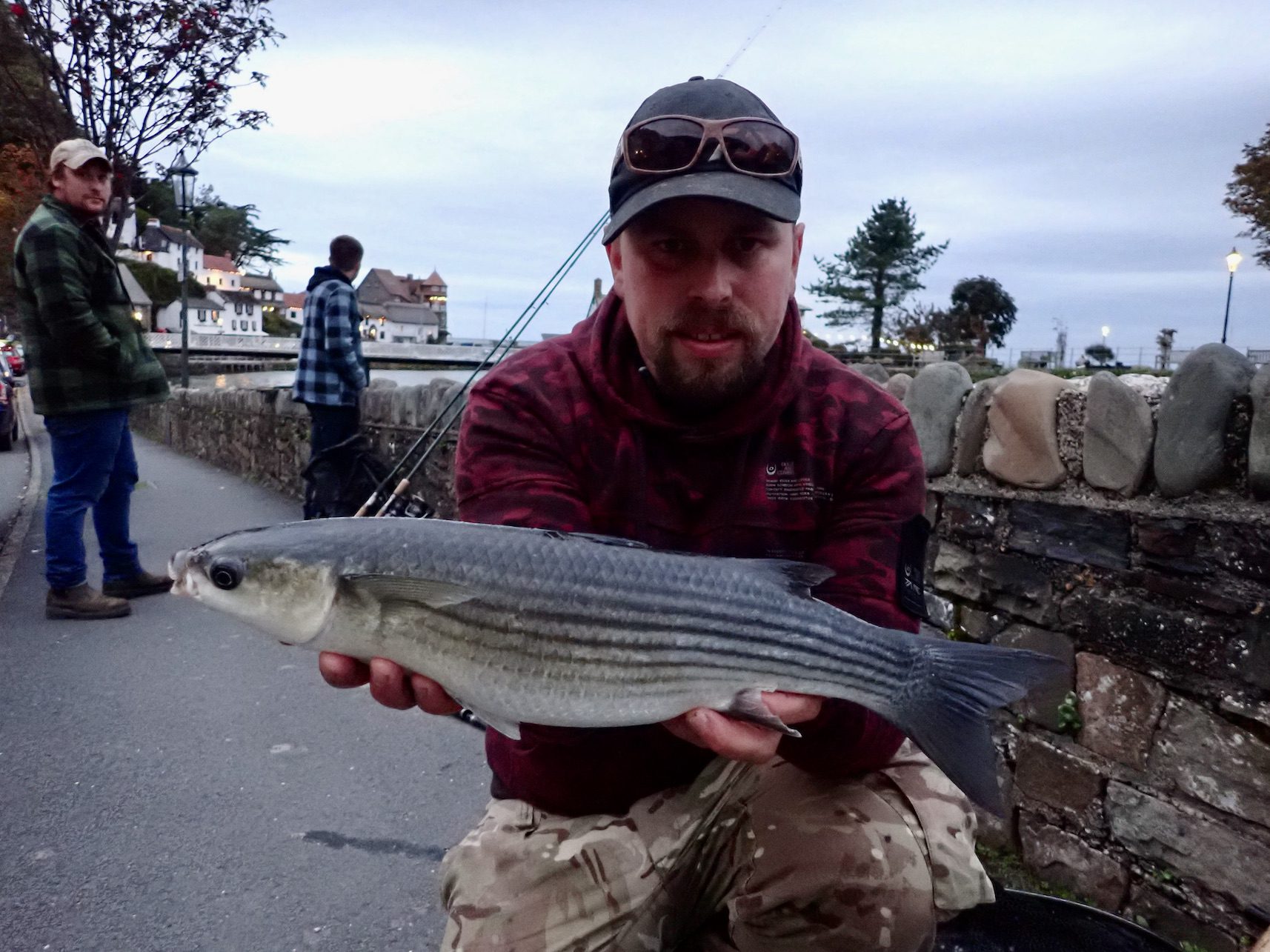
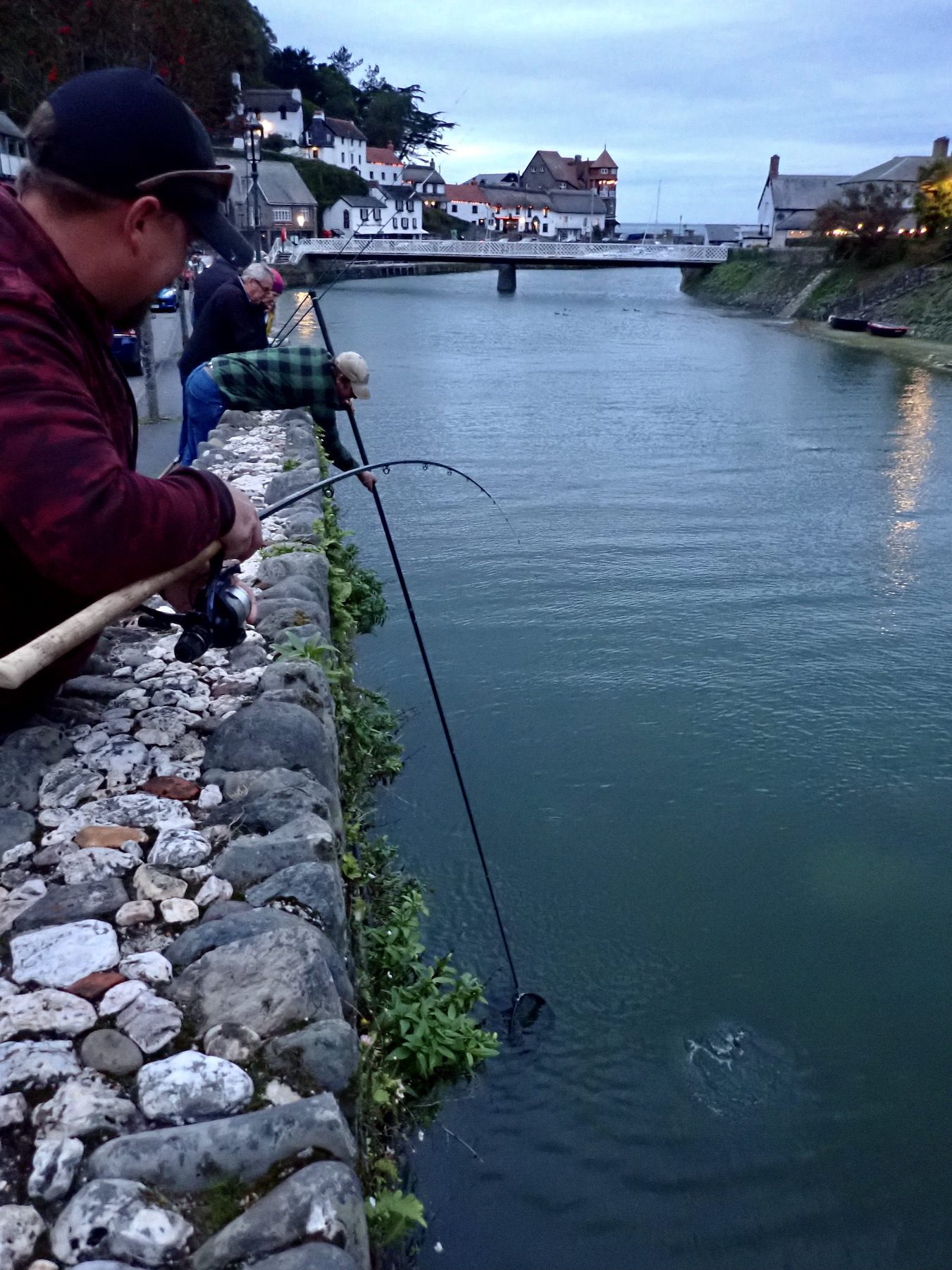
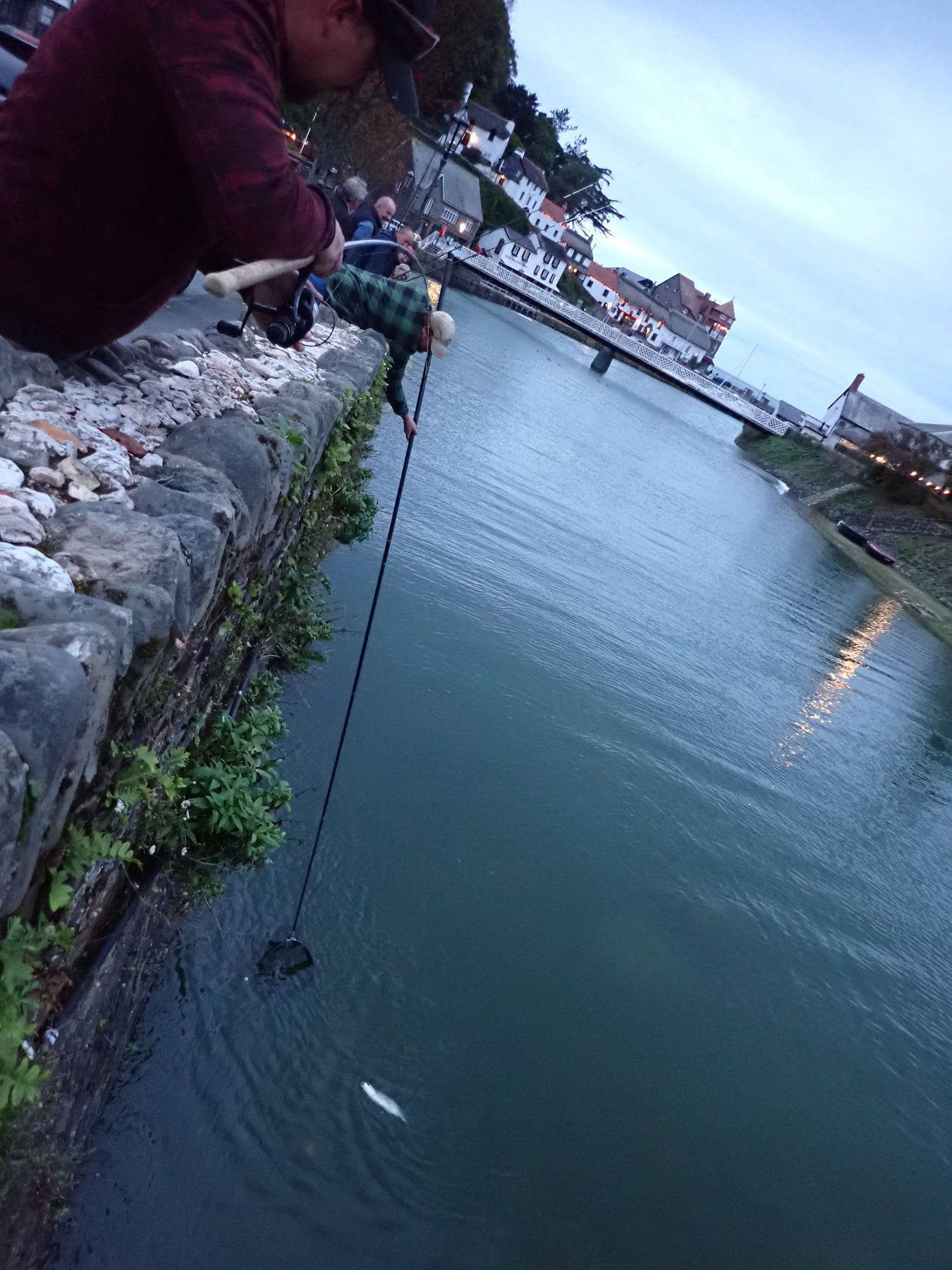
Ten anglers fished the competition with Open coast fishing for heavyweight species proving difficult with just a few dogfish caught on baits intended for ray, bass and huss.